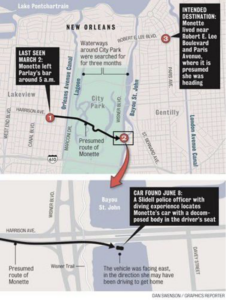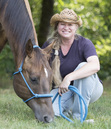Elena Hartwell's Blog, page 21
July 6, 2024
The Garden Girls: A Psychological Thriller
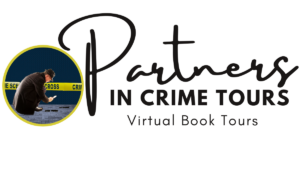 The Garden Girls by Jessica R. Patch
The Garden Girls by Jessica R. Patch
Excerpt + Book & Author Info + Giveaway!
Don’t miss any blog tour post! Click the link here.
The Garden Girls
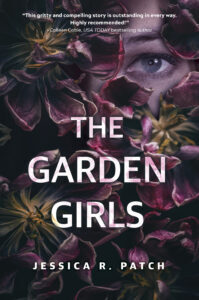 On a remote Outer Banks island, a serial killer collects his prized specimens. And to stop him, an FBI agent must confront his own twisted past.
On a remote Outer Banks island, a serial killer collects his prized specimens. And to stop him, an FBI agent must confront his own twisted past.
FBI agent Tiberius Granger has seen his share of darkness. But a new case sets him on edge. It’s not just the macabre way both victims—found posed in front of lighthouses—are tattooed with flowers that match their names. There’s also the unsettling connection to the woman Ty once loved and to the shadowy cult they both risked everything to escape.
Bexley Hemmingway’s sister has gone missing, and she’ll do anything to find her—including teaming up with Ty. That may prove a mistake, and not just because Ty doesn’t know he’s the father of her teenaged son. It seems the killer is taunting Ty, drawing everyone close to him into deeper danger.
As the slashing winds and rain of a deadly hurricane approach the coast of North Carolina, the search leads Ty and Bex to an island that hides a grisly secret. But in his quest for the truth, Ty has ignored the fact that this time, he’s not just the hunter. Every move has been orchestrated by a killer into a perfect storm of terror, and they will need all their skills to survive…
Book Details:
Genre: Christian Psychological Thriller
Published by: Love Inspired Trade
Publication Date: April 23, 2024
Number of Pages: 367
ISBN: 9781335463074 (ISBN10: 1335463070)
Series: FBI: Strange Crimes Unit, Book 3 || Each is a Stand-Alone Novel
To purchase The Garden Girls, click any of the following links: Amazon | Barnes & Noble | BookShop.org | Goodreads | Harlequin | JessicaRPatch.com
Read an excerpt from The Garden Girls:
Prologue
Sharp claws scrape along my neck.
Back and forth.
Back and forth.
Buzzing fills the room, and I strain to open my eyes but they’re like molasses, thick and sticky and slow-moving. My stomach jumps and the room shifts as my blurred vision registers red walls and coffee-colored concrete. I inhale a hint of bleach and incense with a spicy note as I shift to survey the rest of the room, but my muscles ripple like languid water.
The air-conditioner kicks on, and the cold air raises chills across my naked body.
I’m…naked. A fist squeezes my lungs as panic rips through my system. My memories are disjointed.
Where am I? How did I arrive here?
What is happening to me? What has already happened? Shoe soles click on the floor and silence my questions.
I am not alone. Or…I wasn’t. The door closes with a quiet click.
Get up. Move. Run!
Gripping the sides of a massage table, I roll off, and my bare feet hit cool flooring. The walls close in and shift, and my stomach roils. Something is wrong. Off.
Floor-to-ceiling mirrors cover an entire wall, and my breath catches as reality comes into view.
Pink flower buds wend through a vine of black along my neck and upper back.
Confusion clouds my senses, and I stand cemented in place gawking at the angry red skin, sore and tender and smeared with glossy petroleum jelly.
A tight knot grows in my throat, and tears stab with heated force against the backs of my eyes.
I have to get out of here.
Behind me, I spot a twin bed with luxurious sheets and a thick white comforter as well as tattooing equipment. My hands tremble. Am I in a tattoo parlor? Why is a bed in here?
Lying on the floor next to the bed is an old iron cuff attached to a thick, heavy chain that is anchored to the wall.
Why is that in here and where are my clothes?
I snatch the downy comforter and drape it over my exposed body.
Run. Run. Run!
I open the door but have no clue which way to go or where he is or how long until he finds and cuffs me to that bed.
I’ve been trapped before at the hands of a vicious predator. Old memories surface and spur me across the carpeted flooring. The hall veers left. My eyes begin to adjust to the darkness as I flee to safety—no.
To a dead end.
Defeat leaches like muddy water into my soul, and my chest aches. The only choice is to turn around.
But he’s in that direction.
Sweat slicks down my temples and spine, springing up through my pores like an underground fountain as I return the way I came.
I see what might be a crack in the wall. Light seeps in from the other side. As I approach, I discover it’s a door made to look like part of the wall. I swallow hard and guide my fingers along the smooth wood until I feel a lever. I push it and the door releases, but it takes some grit to open it enough for me to slide through.
I expect some kind of lair or dungeon or God knows what—a wall with torture devices and cages—but it’s not.
It’s a living room with wall-to-wall windows overlooking dark water.
Where is he?
I suck in a breath as creaking registers on the stairs. There’s nowhere to hide, and the comforter is bulky and will easily give me away. I have no option but to ditch it in the corner. I can’t dwell on modesty.
Outside.
I dart toward the sliding glass door, silently slide it open and slip out into the warm night air before scrambling to the edge of the balcony. I crouch to make myself small, like when I was a child and needed to obscure myself.
Maybe he doesn’t realize I’m gone, but then it hits me.
I didn’t shut the secret door concealing the other rooms.
A sob bubbles to the surface as I shake uncontrollably like I’ve woken from anesthesia. The ground is far below me. I’d die or break my legs, maybe my spine. But I’d rather die than go back to that room.
To that chain.
To more tattoo needles.
To him.
I draw up my knees and wait, pray. Hope.
When the door doesn’t open, I scoot across the deck, the raw wood digging into tender flesh, but I need to see if the coast is clear.
What if he’s standing at the door, waiting? Watching?
I hear something and freeze.
One Mississippi. Two Mississippi…I count silently until I reach Twenty Mississippi and scoot again.
I can’t be sure if he’s nearby. If he is, deep in the marrow of my bones, I know the kinds of things that await me. I know what evil men can do. I’ve seen it. Experienced it.
Finally, I muster the courage to peep through the door. The room is empty and dimly lit from the one glowing lamp. I creep inside; my brain is fuzzy and spins.
No footsteps. Only bulging shadows in the corners.
I slither across the Berber carpet and inhale the newness. A set of stairs is on the other side of the open living concept. About ten feet of space isn’t occupied with furniture which means when I make a run for it, and he enters the room, I’ll have no cover.
If he doesn’t and I make it downstairs, he could still be waiting for me.
I try to form a defense plan, but my brain might as well be sludge. Making my move, more out of my flight response than logic, I army-crawl across the open space to the stairs.
Two sets of six. I practically roll down the first set and pause.
He’s not there at the small landing.
Six more to go.
This time I move slower, ignoring the adrenaline shouting sprint. I can’t. He could be waiting and I need to listen.
One…two…three…four…five…six. I pause again at the bottom of the stairs.
No light befriends me on the ground floor. Only darkness—and darkness is never a friend. Darkness is deceptive, offering false security. Nothing good transpires in darkness. It’s not a refuge to hide. But a place to be found. In the dark, I can’t see my predator, but I know he’s lurking.
The door is five feet away to freedom, and I sprint for it.
Hope blooms in my chest.
I mutter a prayer as I run. Three feet left.
Two.
Thank God, I’m here. I twist the knob.
It’s locked.
A cry cracks loose inside me, but I hold it down and fumble with the dead bolt.
Shuffling sounds across tile.
Closer. Closer.
I manage to turn the dead bolt and pull on the door, but it sticks.
He’s coming. The clicks are methodic, slow and measured as if he’s in no hurry. Like he knows I can’t escape. It’s a game.
Please. Please. Come on!
The door opens and I slip out, forcing myself to stay calm in case my mind is playing tricks on me and it’s not him. This time, I make sure to close the door behind me. The air is balmy and the wind rustles through the grass.
The briny sea air washes over my tongue and the marsh grass swishes as I dart down a private boardwalk that leads…I don’t know where. I only know to run and eat up the ground and create distance between me and the house of horror. Between me and him.
Thick walls of clouds block the moonlight.
A door slams. Then I hear something.
Thwupt. Thwupt. Thwupt.
He’s dragging something across the boardwalk. I dare not turn to look.
He’s coming.
Slow and methodical. Silent. Only the awful dragging noise.
Nothing comes into view but marshland and water surrounded by clusters of trees. Alligators lie in wait. I can’t remember how I know this. There are snakes and snapping turtles too.
But he’s behind me.
Plopping noises in the water draw my attention, and I freeze. What is it? Will it approach me or prey on me if I enter too?
I can’t risk staying on the boardwalk. I ease myself into the icy depths and it steals my breath. Slime oozes over my feet, and I sink into mire. Murky water reaches my waist, sending a shock along my abdomen, but I can’t gasp. Instead, I push through the grass and hope the stirring due to my movement won’t alert him of my location.
Sharp twigs and rocks gouge into the bottom of my feet, and I crunch my bottom lip to keep from crying. Marsh grass appears soft at a glance, but it’s strong and sharp like knitting needles and stabs into my flesh and tender places where I’ve been tattooed in flowers.
Ahead is a patch of dense trees that would conceal me even in daylight. A huge splash sends ripples only a few feet away, startling resting birds to flight. Now I know what’s been causing the dragging noise.
A canoe.
He’s cutting through the narrow channels and at an advantage.
I can’t stop now. I push through the mud, which tries to hold me captive, and toward the dense thicket of trees. I finagle my way inside, but it’s like camping in a thorn bush, and nettles rip my flesh. A quiet cry escapes my throat, and I cover my mouth.
Did he hear me? Does he know I’m here?
I shiver in the water, my teeth chattering as something lightweight drops onto the crown of my head and skitters into the thick layers before I can catch it.
I squeeze my eyes shut and clench my jaw to muffle a scream. What hideous legged creature is creeping through my hair?
What swims unseen below my waist?
Plop. Plop. Plop.
Fish, alligators, snakes…him?
“Daaaah, daaaah, dah daaaah,” his rich buttery tone sings. It echoes through the wetland and sweeps over my skin like icy talons. “I’ve got all night,” he continues singing. “I’ll take my time.” I cup my hands over my mouth to silence my chattering teeth. He’s close. So close. “I’ll find you. There’s nowhere to hide,” he belts out as if we’re in a Broadway show. His voice is magical and terrifying. “You belong to meeeee…You want only meee…”
I can’t stay here. He’ll find me. I work as silently as possible out of the thicket and away from the concentration of his voice. I hoist myself onto the wooden boardwalk because he believes I’m in the water. Rushing is out of the question. He’ll hear my footfalls. Slow and steady is about all I can muster anyway. My legs might as well be licorice sticks.
He’s still singing and slicing an oar through the water as I forge ahead, quickening my steps by a small measure until I finally reach the end of the boardwalk and am on dry ground. In the woods.
The woods mean I’ll find a road at the clearing. Help will drive by, and I’ll flag it down to freedom.
I wait a beat while my eyes adjust to greater darkness. The trees loom overhead, and the ground is mushy and mixed with sand. I stub my toe, tripping over roots jutting out, but press on. There’s a path and I follow it. Bike path maybe?
My feet are cut and bleeding and my head pounds. The path curves, then straightens out, and I halt.
Not a road.
Not freedom.
Before me is a long stretch of beach littered with driftwood and shells that cut into my feet. Beyond the beach is the endless sea. No homes. Only wetland to my back and the sea everywhere else.
I have no boat. No canoe. Nothing to propel me to freedom.
I’m on a private island, and I finally remember how I arrived.
*** Excerpt from The Garden Girls by Jessica R. Patch. Copyright 2024 by Jessica R. Patch. Reproduced with permission from Jessica R. Patch. All rights reserved.
Jessica R. Patch — Author of The Garden Girls
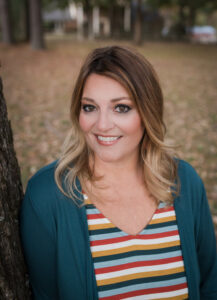
Publishers Weekly Bestselling Author, Jessica R. Patch is known for her dry wit and signature twists whether she’s penned a romantic suspense, a cold case thriller, or a small-town romance.
When she’s not getting into fictional mischief with her characters, you can find her cozy on the couch in her mid-south home reading books by some of her favorite authors, watching movies with her family, and collecting recipes to amazing dishes she’ll probably never cook.
Sign up for her newsletter “Patched In” at www.jessicarpatch.com and receive a FREE short thriller exclusive to subscribers.
Jessica is represented by Rachel Kent of Books & Such Literary Management.
To learn more about Jessica, click on any of the following links: www.jessicarpatch.com, Goodreads – @JessicaRPatch, BookBub – @JessicaRPatch, Instagram – @JessicaRPatch, Threads – @JessicaRPatch, Twitter/X – @JessicaRPatch, Facebook – @JessicaRPatch
& TikTok – @readjessicarpatch
Visit all the Stops on the Tour!
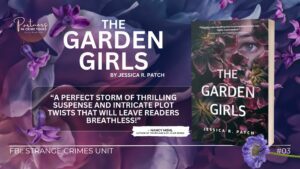
06/24 Guest post @ Guatemala Paula Loves to Read
06/25 Showcase @ Mystery, Thrillers, and Suspense
06/26 Review @ FullyBookedInKentucky
06/27 Interview @ Literary Gold
06/28 Review @ reviewsbyrudra
07/01 Review @ Book Reviews From an Avid Reader
07/02 Review @ Country Mamas With Kids
07/03 Review @ From the TBR Pile
07/05 Review @ Avonna Loves Genres
07/05 Showcase @ Silvers Reviews
07/07 Review @ Pat Fayo reviews
07/08 Review @ Catreader18
07/09 Review @ amandainpa
07/09 Review @ ashmanda. k
07/10 Review @ Paws. Read. Repeat
07/11 Review @ Inkwell Inspirations
07/12 Review @ Why Not? Because I Said So Book Reviews
07/15 Review @ fundinmental
07/15 Review @ fuonlyknew
07/16 Review @ The AR Critique
07/17 Review @ A Room without Books is Empty
07/17 Review @ elaine_sapp65
07/18 Review @ Celticladys Reviews
07/18 Review @ Review Thick & Thin
07/19 Review @ Melissa As Blog
Elena Taylor/Elena Hartwell
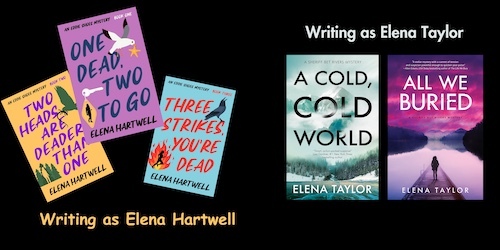
The post The Garden Girls: A Psychological Thriller appeared first on The Mystery of Writing.
July 4, 2024
Elephant Safari: A Thriller
Elephant Safari: a Mbuno and Pero Thriller by Peter Riva [image error]
Guest Post + an Excerpt + Book & Author Info + a Giveaway!
Don’t miss any blog tours, click the link here to read more!
Elephant Safari
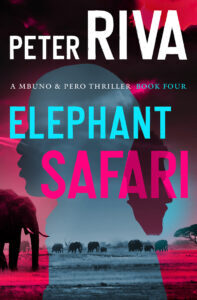
A MBUNO & PERO THRILLER
A documentary team hiking through East Africa collides with a gang of deadly poachers, in this gripping adventure by the author of Kidnapped on Safari.
Years of filming, extreme dangers, and daring rescues have taken their toll on documentary producer Pero Baltazar and his team. To relax and reconnect with the East African wildlife they love, Pero organizes a walking safari for him, his camerawoman Nancy Breiton, and their elite guide Mbuno Waliangulu. Still, Pero has trouble truly disconnecting from work. When the team comes across a herd of elephants making their annual migration north of Lake Rudolf, Pero decides the team will film their journey from Kenya into Ethiopia along the Omo River.
What begins as a peaceful trip quickly turns into a chaotic nightmare as the trio crosses paths with a crew of poachers whose ivory sales are financing terrorists. The three are determined to protect the endangered herd from slaughter, and Mbuno enlists the help of local tribesmen. But the corruption of ivory poachers has deep roots that stretch to UN refugee camps, Chinese gangs, and the Iranian elite Islamic Revolutionary Guard. Faced with overwhelming odds, the trio must now rely on Pero’s contacts in the CIA, as well as Mbuno’s skills in the bush, if they hope to ever return from this excursion alive . . .
Praise for Elephant Safari:
“If you’re in the mood for an African thriller series to add to your summer reading pile, Peter Riva has got you covered. Riva’s impressive career has provided him with plenty of inspiration for his novels, which he writes as a form of relaxation.”
~ The Lakeville Journal and The Millerton News
“Many readers will enjoy this story for its fast pace, engaging characters, and insights into world politic. I particularly loved the depth of knowledge about the natural history and ecology of the East African landscape. This may be a thriller but it’s also an important book about the killing of elephants for their ivory tusks.”
~ Sharman Apt Russel- John Burroughs Medal winner
Elephant Safari trailer:
Book Details:
Genre: Action and Adventure Thriller
Published by: Open Road Media
Publication Date: January 30, 2024
Number of Pages: 302
ISBN: 9781504085335 (ISBN10: 1504085337)
Series: The Mbuno & Pero Thrillers, 4 | Each is a Stand-Alone Novel
To purchase your copy of Elephant Safari, click any of the following links: Amazon | Barnes & Noble | BookShop.org | BookaMillion | Goodreads | Open Road Media
Read an excerpt of Elephant Safari:
In modern Kenya and most of East Africa, elephant were dying out, Mbuno knew this and lamented. His chest ached for them. Gone were the innumerable small herds of his youth, mostly replaced by farms, settlements, human sprawl, and tourist attractions. What elephant remained had their age-old pathways and migration routes blocked, stopped, fenced, and constantly monitored. White men came and collared them, watched them on scopes, darted them, sampled them, and even shot them when they became a nuisance to farmers with cash. What elephants modern man did not manage in parks were easy prey for poachers. The days of the Liangulu hunter were over. Mbuno knew this, accepted this, and did not mind even half as much as he mourned the passing of the realm of the elephant.
All of Africa had once been the realm of the elephant. As the largest beast, immune to the normal prey and hunter battles going on all around, the elephant set the pace of the land, fertilized the forests, cropped the prairies, and paved the migration routes that all the migratory species followed. In times of drought, their superior intelligence showed where water could be found and even taught man to dig in dry riverbeds for a boundary layer of precious liquid. They created mud holes for mud baths to keep the insects at bay, used also by Cape buffalo and rhino. Over the millennia, they brushed aside acacia thorns and baobab saplings with equal ease creating the open plains. And, in time, Africa’s rhythm resounded to the beat of their feet and their migratory timekeeping. Without the elephant ruling the land, the land fell into the discordant rhythm of the upright apes and began to fracture. Mbuno had known the last best years of the elephant’s realm and, sadly, was now witnessing the fall of Africa’s harnessing stability. Without the elephant to freely roam, the balance of nature would be broken, herds would grow to enormous size in protected parks and, outside that protection, devoid of traditional hunters, herds could be led by weak leaders who would fail to protect them from ivory hunters. Mbuno had heard this had happened before. At the end of the slave and ivory trade, in 1911 there were fewer elephants than now and the herds were only brought back from extinction by White Hunters—led by Teddy Roosevelt—using farm and ranch husbandry methods – culling every senile cow and bull. Young, vibrant, herds repopulated the migration routes. But now the elephant and Mbuno’s tribal way of life were both threatened once again.
Mbuno looked back to make sure Pero and Nancy were crouched, waiting a few hundred yards away as he instructed. He then inched closer to the worrying herd, prone again, a sharp stone rolling under his hip painfully. He dared not move quickly, the bush above him would vibrate. He stopped any forward movement as he spotted feet, the small grey feet of a baby elephant, a mtoto.
One foot had an encircling, red, puss-oozing sore. Behind the mtoto’s feet stood the mother. Mbuno could see the way the weight was shifting on both mother and child that the mother was soothing the young one who would be in pain. Silent pain, the sign of a strong herd leader. Or a very frightened herd, one that is being hunted. The mtoto’s sore had been caused by a wire snare that had probably dropped off. Mbuno had seen this far too often. Now Mbuno felt compelled to do something, not just observe. It was now a matter of honor, duty, and common ancestry, not to mention his responsibility for the safety of his safari charges.
Mbuno’s mind made decisions quickly. In the bush, life and death were often just moments apart. Soundlessly, moving no bush or twig, he retreated the way he had come, donned his pants only, and set himself into a running crouch. It was his usual hunter’s pace, swift, determined, and ready for a change in direction. Circling the place where he knew the herd to be, he stayed four hundred yards away at least. Starting downwind and determinedly coming full half circle until he announced his presence to their sensitive noses, he tested their resolve. When he was sure they had smelled him, he knew there was real danger here because there was no charge, no bellowing threat, no foot stomp. The elephants could smell that he was only one man and also that he was a man of the bush. As Mbuno had feared, they clearly had a more dangerous enemy threat nearby, for they did not give themselves away. He continued his crouching circling run, sweating from adrenaline and the jini of the hunt. For he was hunting, but not elephant.
When he was three-quarters the way around his circle, he sensed, and then diving behind a fallen log on his stomach, he saw the men just outside the forest’s edge. One was sitting on a pickup truck’s hood and two stood in the flatbed. They wore no uniform. The man sitting was dressed as an Arab with a face scarf and camouflage trousers and bush shirt. He had binoculars but no gun. And two standing tribesmen looked like Pokot, Mbuno thought–northern, violent Maasai cousins. Hunters, not cattlemen. The two tribesmen had black rifles with yellow wood stocks and foregrips. Mbuno knew AK-47s when he saw them. Mbuno had seen these types of poachers before. They snared a baby and, in its squeals, it attracted the herd; close and closer until the slaughter would be efficient, deadly, machine gun rapid.
Standing behind a tree trunk on tiptoe, peeking out, Mbuno saw the panga (machete) on the flatbed tailgate, unsheathed, its 12-inch blade glistening, freshly sharpened. The back of the truck held two freshly drawn tusks; the brown blood still not yet black. The herd had been running and not just because of the mtoto.
Mbuno did not hesitate, did not reason, did not moralize. In the bush, the law of the land was kill or be killed. These men had killed, wasted the life of elephant, wanted to slaughter the rest, and were dishonorable. He saw them as little more than wanyama—vermin—to be stopped. Without altering his run, he circled behind the pickup and approached them from behind, soundlessly, before the men could even know he was coming.
***
Excerpt from Elephant Safari by Peter Riva. Copyright 2024 by Peter Riva. Reproduced with permission from Peter Riva. All rights reserved.
Guest Post from Peter Riva, Author of Elephant Safari
Imagine you are sitting around a campfire, man, woman, or teenager—and your favorite storyteller tells you a fantastic tale that resonates with values you understand, action that thrills and, above all, humor to offset momentary drama. The lasting impression should be a cozy feeling of a story well shared, a campfire experience memory to cherish—and an increased love of wildlife, if I’ve done my job properly. The backbone to my Mbuno and Pero stories is that Mbuno understands the nature of all wildlife — and Pero understands the complexities of the modern world. They are yin and yang, each complimenting—never competing with—the other. Both are inwardly peaceful men; both respect nature and colleagues as equals. Both also have a very strong protective streak. Once again it is happenstance that lands them in difficult situations and moral dilemmas that only their unique combined talents can extract them from.
Someone once asked me if authors should always follow the old adage of writing what they know. My response was yes… Been there, seen it all there, now share the “other” with readers. On top of that, events that are real can be interwoven to bring dimension to a simple story of an accidental need for action. Within that action can be an explanation of what boundaries have to be overcome and the morals necessary to sustain the protagonists. The premise for my books is always a simple, planned beginning where something suddenly goes horribly wrong or threatens the cast of characters – bringing out Mbuno’s and Pero’s strong sense of protectionism. So, when I start a novel, I plot only the beginning of an adventure that could remain ordinary and peaceful… then all hell breaks loose and my real-to-life global facts begin to weigh in, forcing plot twists and the incredible resourcefulness of Mbuno and Pero.
I knew the real Mbuno in the ‘80s. He and I shared that affinity for nature, an understanding that we are animals too. Seen from that perspective, I never feel I own my dog for example, but share my time with him or her for as long as I can. In the wild—where I live in southwest New Mexico—I respect, observe and generally stay away from some larger animals that I see as equals: lions, bears, snakes. I am never afraid. Wary? Sure. Feel part of nature? Always. Reality in nature as in life is a strength.
I first visited the African continent in 1966, aged 16. In the early ‘80s through the late ‘90s, I produced magazine features, TV commercials, primetime TV specials – all over East Africa –and then 78x 1-hour animal documentaries in 60+ countries. In ’82, at Hog Ranch, in Kenya, I met and spent time with Mbuno, a Waliangulu scout, until he passed in early 1991. His father had been a guide to Teddy Roosevelt and Mbuno, then aged 80 or so, had been Bill Holden’s and Hemingway’s scout. On foot safaris, just the two of us, Mbuno shared the real East Africa with me, his ancestry, and his tribal story. His connection to the land reminded me of the American Indians’ nature-centric culture and oneness. His capabilities in the bush were unique and extraordinary.
My personal passion for the news and a wonderful boarding school experience with 60+ nationalities allows me to have insight into international perspective, events, and possibilities that, cobbled together, can be woven into a gripping tale. I am not a literary writer, but I do tell a good story. I try to be a simple story-teller, sharing my experiences and knowledge for the pleasure of doing so and to give pleasure. Perhaps it is a primordial need to impart what I know and have experienced for the benefit of future generations; kind of like the Norse sagas or the Canterbury Tales – there is deep truth in there even when disguised as thrilling tales.
Peter Riva — Author of Elephant Safari
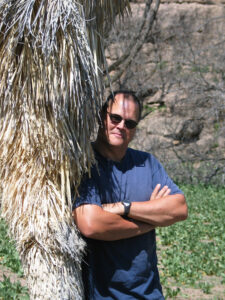
Peter Riva has traveled extensively throughout Africa, Asia, and Europe, spending many months spanning thirty years with legendary guides for East African adventurers. He created the Wild Things television series in 1995 and has worked for more than forty years as a literary agent.
Riva writes science fiction and African adventure books, including the Mbuno & Pero thrillers. He lives in Gila, New Mexico.
To learn more about Peter, click any of the following links:
www.PeterRiva.com
Goodreads
BookBub
Instagram – @peterriva_author
Facebook – @peter.riva
Visit all the Stops on the Tour!
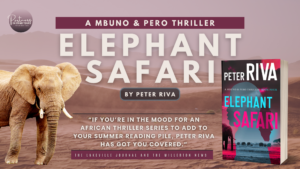
06/24 Interview @ Literary Gold
06/25 Review @ Country Mamas With Kids
06/26 Review @ Novels Alive
06/26 Showcase @ Mystery, Thrillers, and Suspense
06/28 Review @ FullyBookedInKentucky
07/01 Showcase @ Books, Ramblings, and Tea
07/02 Showcase @ Binge Reading Books
07/03 Showcase @ Guatemala Paula Loves to Read
07/04 Guest post @ The Mystery of Writing
07/10 Interview @ darciahelle
07/12 Review @ Book Reviews From an Avid Reader
07/16 Podcast reading of the excerpt @ Books to the Ceiling
07/16 Review @ The AR Critique
07/17 Review @ Why Not? Because I Said So Book Reviews
07/17 Showcase @ Celticladys Reviews
07/18 Review @ Enjoyingbooksagain
07/19 Review @ fundinmental
08/21 Book Talk with Fran Lewis Radio Interview
08/21 Review @ Just Reviews
12/13 Mysteries to Die For: Toe Tags Podcast
Elena Taylor/Elena Hartwell

The post Elephant Safari: A Thriller appeared first on The Mystery of Writing.
July 3, 2024
Cheryl L Reed: Map of My Escape
Cheryl L Reed launches a new mystery, Map of My Escape
[image error]
Guest Post + Excerpt + Book & Author Info
Don’t miss my interview with Cheryl L Reed. Click the link here.
Map of My Escape by Cheryl L Reed
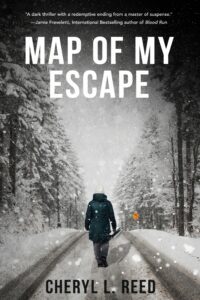
The shooting of a homicide detective is captured on film by a mysterious figure from a second-floor window, implicating Riley Keane, an anti-gun activist and a school shooting survivor. Riley flees Chicago for a frozen island in Lake Superior. A race to find her ensues between her secret lover—Chicago politician Finn O’Farrell—a corrupt police lieutenant, and the mysterious cameraman who extorts Riley’s family and Finn. Finn’s entanglement with Riley and the extortionist threatens his ambitious political career.
On the island, Riley ingratiates herself into the close-knit community, but when she witnesses both an islander’s murder and another death in a suspicious boating accident, the local sheriff starts asking questions that begin to unravel her true identity. As the sheriff and the FBI are closing in on Riley, Finn faces media pressure to reveal his mysterious role in that long ago school shooting. If the facts come out, Finn may go to prison, but his biggest fear is that the truth will forever sever his relationship with Riley.
Praise for Map of My Escape:
“Atmospheric and gritty, Reed’s tale of a woman on the run from her own shocking past will keep you rooting for her until the end. A dark thriller with a redemptive ending from a master of suspense.”
~ Jamie Freveletti, International Bestselling author of Blood Run
“Taut, atmospheric and unputdownable. Reed knows how to keep you turning pages!”
~ Candice Fox, International Bestselling author of Crimson Lake, now an ABC series Troppo
“Bending genres of police drama and adventure thriller, The Map of My Escape is both original and breathlessly page-turning!”
~ Wendy Walker, International Bestselling author of Don’t Look For Me
“Cheryl Reed’s Map of My Escape is a character-driven thriller, a poignant opposites-attract love story, and a journey of self-discovery. As secrets unfold and twists abound, Reed keeps us on a razor’s edge. An absolutely gripping read!”
~ John Copenhaver, award-wining author of The Savage Kind and Dodging and Burning
“Map of My Escape combines tragic events, engaging characters, and unique locations to give readers one hell of a ride.”
~ Elena Taylor, author of All We Buried and the Eddie Shoes mysteries.
Book Details:
Genre: Mystery and Detective
Published by: Running Wild Press
Publication Date: June 18, 2024
Number of Pages: 402
ISBN: 9781960018175 (ISBN10: 19600018175)
To purchase Map of My Escape, click any of the following links: Amazon | Barnes & Noble | BookShop.org | Goodreads
Guest post from Cheryl L. Reed, author of Map of My Escape
What I Would Tell My Younger Self
In my home office above my desk is a white board with this message scrawled in blue ink: “Everything, eventually, works out.”
It’s an axiom I continually must repeat to myself as an author and writer. Like many creative people, I suffer intense anxiety about my work and finding a home for it. There are so many aspects of writing and publishing that are completely out of our control. Some people like to call it luck. Others say it’s timing. But those are not aspects you can really bank on or anticipate. It’s sort of like trying to game the stock market.
And it’s not just the market. Getting a manuscript into the hands of an agent, then onto an editor’s desk without your vision, concept, characters or even plot changing is virtually unheard of. An experienced author once told me that the book you conceive is rarely the book that you end up writing or publishing.
Even if your book makes it to the publishing stage, you are frequently met with a fickle and crowded market, all vying for the same reading eyes. The process can be grueling and ego crushing.
Shortly after my first book, Unveiled: The Hidden Lives of Nuns, a nonfiction work about the four years I spent living on and off with religious women, was bought by a big house, my editor was fired and my manuscript wound up in limbo. I agonized to the point of stomach upset every day for months. Then my worst fear happened: The publisher killed the book. That was it, I thought. That was the end of my nascent career as an author. I was miserable for many more months.
And then one day my agent called and said she had two bids for the manuscript. The book was published by a respectable press with modest success in hardcover and paperback. Six years later it was republished with a new cover—a piece of luck that I couldn’t have predicted.
My second book, Poison Girls, a novel about daughters from political families playing a deadly game using fentanyl-laced heroin, garnered the interest of a handful of big houses. But because the story involved teenage girls doing drugs, the book was deemed too controversial. One editor told me the book was ahead of its time. She was right. Had that manuscript circulated two or even three years later as our society became more aware of the opioid epidemic, it likely would have had a different reception. After the rejection, I again worried for months thinking that this book, which had taken me more than ten years to write, would never get in the hands of readers.
Six months later, one of those editors, who had fallen in love with the book, jumped to a small press and mine was the first book she bought. The small publisher later turned out to be a chaotic mess and my book got lost in that poor management. I, and other writers, had to fight to get our rights back. I published the book again under my own imprint and learned a lot about self-publishing in the process, a valuable experience. I’ve since made more money on my own than I ever did with that publisher.
And, so, here I am with my third book, Map of My Escape, about a female fugitive and school shooting survivor who shoots a cop and must flee to a frozen island where she remakes herself to elude the police, the FBI, and a blackmailer who filmed the shooting. The manuscript went through multiple changes and was eventually acquired by a small press. Actually, it was acquired by two small presses. The first press, which shall remain anonymous, seemed like a slush factory. When my current publisher expressed interest, I bought my rights back so the second publisher could acquire the book.
This year, marks twenty years since my first book was published. I still worry about all the small stuff, but I also know that this is publishing. Answers in this industry take time—months, something years. Things never go as planned. There is no such thing as a perfect book launch. When small disasters occur—and they always do—I urge myself to wait a few days, sometimes weeks, and see if things work themselves out. They usually do.
If there is one message I could go back and tell my younger self, it would be to enjoy the ride. Be happy that your book got out into the world, when so many don’t. Enjoy each accolade and praise, even if it is just a handful of compliments and positive reader reviews online.
All we can do, really, as authors, is write the best book we are capable of, then swallow our dignity and drive publicity as hard as we can. The rest is up to readers, publishers, reviewers, and booksellers. Be patient. Give the world a chance to respond, for book karma to come your way. Eventually there will be a resolution to your current book dilemma. It most likely won’t be what you wanted or what you predicted, and, sometimes, it’s even better.
Read an excerpt of Map of My Escape by Cheryl L Reed:
I had often wondered what it would be like to disappear. As a teenager, I read books like Famous Female Fugitives and pored over stories in my mother’s magazines about women who had committed crimes with their boyfriends and ran. They changed their names, plucked birthdates off gravestones of dead babies to obtain new Social Security cards, and created new lives. I was never curious about the men who disappeared. The FBI’s Most Wanted lists were full of men who’d eluded cops for years, only later to be discovered as the quiet loner next door. The women fugitives, though sparse in number, were seldom quiet. They married, raised kids, built careers. Sara Jane even joined the PTA, acted on stage, and made speeches before her state senate. They lived their new lives in public as if they were flaunting the authorities in plain sight. I admired their tenacity.
There had been times in my life when I desperately wanted to disappear, when I dreamed of slipping away from the present and starting over somewhere else under a new identity. The pull became stronger after forty-four of my classmates, including my brother, and five of our teachers were killed by a guy in combat boots re-enacting his favorite video game.
I remember that day vividly. We were all at an assembly in the gym. I was sitting somewhere in the middle of the bleachers—they were the old-fashioned, accordion kind that pull out from the wall. I was reading index cards, trying to memorize trigonometry theorems for a test. Principal Brown was at the podium talking, but it was all background noise until a loud crack resounded through the gym. The metal doors at the front of the gym—the only way in or out—opened and slammed shut. Everyone turned to look. Even Principal Brown stopped talking mid-sentence. Darren Wallack, a guy no one paid much attention to, was standing at the gym entrance dressed like a Ninja warrior, a gun and ammo strapped across his chest, a rifle in his hands. He looked almost comical, except it wasn’t Halloween.
Nancy Greene, a whisper of a girl with thick glasses and braces, let out a high-pitched squeal. She was his first victim. Then pandemonium struck. Everyone moved at once. People climbed over others, trying to get away. Some hunkered down, attempting to hide. The air smelled of desperation and fear. Everyone was screaming, panicking. The gun blasted, again and again, loud, sharp cracks, like a whip cutting the air.
I noticed a guy slide his feet in between the thin slats of the bleachers. Our eyes met. He hesitated, then offered me his hand. We climbed down the support scaffolding. A few others chose to hide beneath the bleachers, too. We spread out in clumps of two and three as if we were safer with space between us. The stranger and I crouched in the corner, peaking through the gaps of the bleachers watching as Darren fired continuously, swinging his rifle from left to right like some character he’d seen in a bad movie.
“He’s going to kill us,” I whispered. I couldn’t breathe.
I’d never met this guy next to me, but his eyes were kind, reassuring. He was black. At our charter school, Blacks, Asians, Mexicans, and Whites didn’t mix.
“It’s going to be okay.” He patted my back. He seemed so calm.
Through the crack in the bleachers, we could see our classmates scrambling back and forth across the basketball court, shrieking terrified screams. Darren stalked them, firing a barrage of bullets until they slumped to the floor. I looked away. I couldn’t take it anymore.
Several rounds flew over our heads. “He’s coming toward us,” the guy said. “Get down.”
I lay on my stomach on the cold floor, the stranger next to me, convinced we were about to die. I thought about my family, my mother and father, and my older brother, who had just started college. And for a quick moment, I mourned for them. Then I thought about my younger brother, Ross. He was out there somewhere. I tried to remember where he was sitting. When was the last time I saw him?
“What is your name?” I whispered.
“What does it matter?”
“Because I don’t want my last minutes on earth to be spent with a complete stranger.”
“I’m Reece,” he said. “You’re Riley.”
“How do you know my name?”
“Everyone knows who you are.” He reached over and draped his arm across my back, his upper body forming a protective shield.
Darren’s boots stomped above our heads. Kids screamed, scuttled to get away. The gunfire sounded like firecrackers. I plugged my ears with my fingers. I couldn’t bear to hear it anymore. If Darren came down under the bleachers, we were dead. There was nowhere to run. It was the most horrifying fifteen minutes of my life.
Then the footsteps stopped.
We didn’t know if we could come out. We heard hard footfalls, police hollering as they hunted down Darren. It seemed like we were huddled down there for hours. When the police announced it was over, we walked out from under the bleachers like horror movie zombies.
That’s when we saw them.
Bodies were sprawled on the bleachers. They covered the gym floor, piled in some places. I recognized many of their faces, kids I saw in literature class or passed in the hallway. I stepped around them, my sneakers sticky with blood, looking for friends, anyone I knew. Then I recognized his mousey brown hair. His face looked serene as if he were taking a nap. He was wearing his new White Sox jacket with black sleeves and white on the torso. Our parents had given it to him for his birthday two weeks earlier. He only took it off to go to bed. Now the white part was ruby red. And my brother was never going to wake up.
For years afterwards, I dreamed about disappearing. Just up and walking out of my life—what was left of it. I hadn’t thought about my fugitive fascination in a long time. Of course, now it’s much harder to evade police in a digital age when a person’s every movement can be tracked. But I didn’t consider any of that the day I ran after shooting Reece.
Running is the natural reaction—even if you do not know where you are running to. The adrenaline and animalistic self-preservation kick in, leaving your brain a scrambled mess while your body takes over.
I drove in a daze, focused on the yellow line that I hoped would lead to a better future. Running from the cops is challenging for a normal person. But when you’re an activist and your mug shot is floating on police and FBI computers, vanishing is a lot harder. We are all electronic files, avatars moving from screen to screen, followed by one entity after another.
I had to jump off those screens. That meant no electronics of any kind—no phones, no GPS, no computers. If I wanted to escape, I had to do it old school, like the women in the Famous Female Fugitives.
***
Excerpt from Map of My Escape by Cheryl Reed. Copyright 2024 by Cheryl Reed. Reproduced with permission from Cheryl Reed. All rights reserved.
Cheryl L. Reed — Author of Map of My Escape
 Cheryl L. Reed is the author of the nonfiction book Unveiled: The Hidden Lives of Nuns and the novel Poison Girls, which won the Chicago Writers’ Association Book of the Year.
Cheryl L. Reed is the author of the nonfiction book Unveiled: The Hidden Lives of Nuns and the novel Poison Girls, which won the Chicago Writers’ Association Book of the Year.
A former staff editor and reporter at the Chicago Sun-Times and other publications, Reed’s stories have won multiple awards, including Harvard’s Goldsmith Prize for Investigative Reporting.
She has twice been awarded a U.S. Fulbright Scholar fellowship by the State Department, first in Ukraine and then in Central Asia.
She splits her time between Washington, DC and her home near the Chesapeake Bay in Virginia.
To learn more about Cheryl, click on any of the following links: CherylReed.com Goodreads, BookBub – @cheryllynnreed, Instagram – @cheryllynnreed, Twitter/X – @AuthrCherylReed & @JournoReed & Facebook – @CherylLynnReed
Don’t miss this Interview Cheryl L. Reed on #BookTok!
Visit all the Stops on the Tour!
06/11 Review @ Country Mamas With Kids
06/12 Review @ Wall-to-wall Books
06/13 Showcase @ Mystery, Thrillers, and Suspense
06/14 Showcase @ Silvers Reviews
06/15 Review @ elaine_sapp65
06/16 Guest post @ Guatemala Paula Loves to Read
06/17 Showcase @ Archaeolibrarian – I Dig Good Books!
06/18 Showcase @ Books, Ramblings, and Tea
06/19 Review @ bookwormbecky1969
06/20 Review @ Novels Alive
06/21 Podcast reading @ Books to the Ceiling
06/21 Review @ Why Not? Because I Said So Book Reviews
06/25 Review @ ashmanda. k
06/26 Interview @ Literary Gold
06/27 Guest post @ Cozy Home Delight Book Reviews
06/27 Showcase @ Celticladys Reviews
06/30 Review @ FullyBookedInKentucky
07/01 Review @ Pat Fayo reviews
07/02 Interview @ Hott Books
07/03 Guest post @ The Mystery of Writing
07/05 Review @ Melissa As Blog
08/01 Book Talk with Fran Lewis Radio Interview
08/01 Review @ Just Reviews
11/15 Mysteries to Die For: Toe Tags Podcast
Elena Taylor/Elena Hartwell

The post Cheryl L Reed: Map of My Escape appeared first on The Mystery of Writing.
July 2, 2024
A Place Unmade: A New Thriller
A Place Unmade, a debut thriller by Carla Seyler
Book & Author Info + Author Interview + Author Pet Corner!A Place Unmade
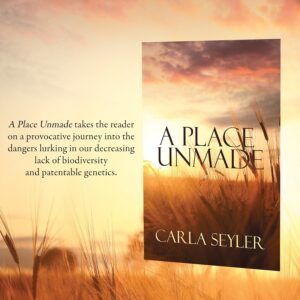
A Place Unmade is a book about someone who commits a crime, causes a disaster and the people who try to stop him.
Valentina Sorelli is a part-time graduate student and full-time marketing director of a community park in New Orleans. Jack Stillman is a corporate executive who hijacks his company’s research for personal gain, and he doesn’t care about the consequences. Their separate paths intersect when Valentina meets Jack’s son Sam, who becomes the link between the worlds of scientific discovery and corporate espionage.
As the story unfolds, Valentina and her classmates unite to try to stop Jack. They get a little help from a corporate whistleblower as well as the FBI. Valentina’s friendship with one of her classmates evolves into something more as they fight for their lives. A Place Unmade takes the reader on a provocative journey into the dangers lurking in our decreasing lack of biodiversity and patentable genetics.
To purchase A Place Unmade, click any of the following links: Amazon, Black Rose Writing & Barnes and NobleA Place Unmade — Author Interview with Carla SeylerA Place Unmade focuses on Valentina Sorelli and Jack Stillman, tell us about those characters and how they come to impact each other:
Valentina is in her mid-20’s and the new marketing director at a New Orleans city park.
Like many New Orleanians, she is close to her family and expects others to be too. Through her part time graduate program, she meets Jack Stillman’s son, Sam. As they become friends, Valentina is surprised by their lack of connection and difficult family dynamic. Through her friendship with Sam, she discovers Jack’s role in the wheat crisis affecting farmers across the country.
Growing up in New Orleans gave me the opportunity to experience many different cultures and backgrounds, and I wanted that for my characters. A university setting was a realistic place where they could meet, interact, and participate in an ethics class that became the framework to the challenges they faced. As they worked together, I had a natural platform for them to express different perspectives and values.
A Place Unmade is set in New Orleans. How do the characters interact with that environment?
I wanted to portray the city realistically and use places and settings that aren’t typically depicted.
Some descriptions of New Orleans in popular fiction present this incredible city as a caricature instead of a place where residents go about their lives. The university Valentina attends is similar to the public university I attended for my undergraduate degree—very open, practical, and offering an opportunity for personal growth.
I borrowed heavily from City Park in New Orleans to create Valentina’s employer, Winslow Park. In addition to being a city that celebrates music and food, New Orleans is family-oriented and multi-cultural. Sometimes that gets lost and I wanted to emphasize that.
A Place Unmade also addresses our decreasing lack of biodiversity and patentable genetics. What drew you to those issues for your debut novel?
An article published in the NYT called “Save our Food Free the Seed” introduced me to the dangers of industrial agriculture and patentable genetics. Mass production of crops causes a lack of biodiversity. Four industrial agricultural companies now control 60% of all the seeds that are produced in this country.
One of those companies is American, two of those companies are German, and the last one is Chinese. They control all the pesticides and fertilizers. They use one or just a few versions of a grain or vegetable, and this makes our food supply increasingly vulnerable.
I wanted to create awareness and felt driven to write a book that would make the science accessible and the danger real. I hoped to highlight the importance of small farmers and the critical contribution they make to our country, not only from an economic standpoint, but culturally. It’s a way of life that is endangered and we should be doing more to support them.
How did your background in psychology and counseling aid in creating characters for your debut?I tried to provide a background for Jack’s motivation to succeed at all costs. By putting my characters under stress, I had the opportunity to explore their reactions.
After working in the field of vocational rehabilitation for many years, I wanted to include a character who functions well in spite of a disability. Although this character appears much later in A Place Unmade, the role is quite important and this character may appear in my next book.
What can we find you doing when you aren’t reading and writing?
I enjoy traveling, and try to identify places off the beaten path, even when going to mainstream locations.
With New Orleans’ record breaking temperatures in the summer, I spend time in Colorado to get away from the heat and hurricanes. I love being with my family and friends, attending musical performances, as well as cooking, practicing yoga and gardening.
What are you working on now?
I am writing a new book tentatively called CHANCE ENCOUNTERS. It’s about Coco Benoit, a single, professional woman in her mid-40’s who stumbles onto a smuggling operation at her long-term employer, an offshore oilfield supplier. She encounters pirates in the southern Gulf of Mexico, smooth-talking Cajuns, and Ira, her boyfriend, who is too clever for his own good.
Words of Wisdom for Aspiring Writers:
Decide what your goals are. Is it to be a best-selling author? A local writer who develops a following, maybe gets known regionally? Or maybe just writing is your goal? Every writer now, unless you’re someone like Stephen King, has to market her work. You’re going to need a social media presence, so get started on that now. Pick one platform, whether it’s Facebook, Tik Tok, Instagram, whatever. Even if you self-publish, if you want people to read what you’ve written you have to let people know about it.
If you are really ambitious, you need to think about hiring a publicist. Otherwise, you’ll need to have some familiarity with social media. Agents look to see whether you have a social media presence. Join some online Facebook groups to get to know the lay of the land. Look at websites and social media posts for authors you like and see what they do. Keep in mind your priorities, what you want to happen. Keep your focus on what you enjoy about this crazy world of writing and publishing.
Great Advice!Author Pet Corner!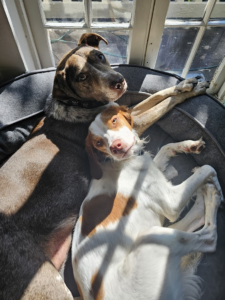 Murray! (on the left) and Charlie! (to his right)
Murray! (on the left) and Charlie! (to his right)The Granddogs!
Murray is a Catahoula and Charlie is a Brittany.
Carla Sayler — Author of A Place Unmade
 Carla Seyler is a graduate of the University of New Orleans (UNO) and Loyola University, where she studied psychology and counseling. She worked in the field of vocational rehabilitation counseling for many years. Each individual, each situation was different and required a great deal of research to understand what were the challenges and how to address them.
Carla Seyler is a graduate of the University of New Orleans (UNO) and Loyola University, where she studied psychology and counseling. She worked in the field of vocational rehabilitation counseling for many years. Each individual, each situation was different and required a great deal of research to understand what were the challenges and how to address them.
She was driven to write A Place Unmade after reading a NYT article by Dan Barber called “Save our Food, Free the Seed.” The article pointed out the increasing lack of diversity in our food supply. Regulations and patents support large agribusinesses that are most profitable with uniform, monoculture crops. She was shocked to learn that a company can patent a seed. Or even a trait that a plant manifests. Seyler took a deep dive into the world of agriculture, seed banks, as well as grain crops and their predators to be able to tell a story that she hopes entertains and informs.
Seyler lives in New Orleans with her husband, Mark Winter. She has two independent daughters.
To learn more about Carla click on any of the following links: Instagram & Website

Header image from Pixabay
The post A Place Unmade: A New Thriller appeared first on The Mystery of Writing.
July 1, 2024
Jennifer Moorhead: Debut Thriller Author
Jennifer Moorhead debuts a bestselling thriller, Broken Bayou.
Book Review + Book & Author InfoDon’t miss any reviews, click the link here for more.Broken Bayou
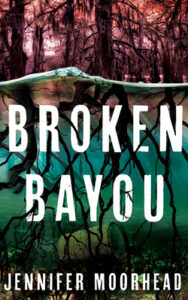
In this debut thriller, a troubled child psychologist returns to a small Louisiana town to protect her secrets but winds up having to protect her life.
Dr. Willa Watters is a prominent child psychologist at the height of her career. But when a viral video of a disastrous television interview puts her reputation on the line, Willa retreats to Broken Bayou, the town where she spent most of her childhood summers. There she visits her aunts’ old house and discovers some of her unstable mother’s belongings still languishing in the attic—dusty mementos harboring secrets of her harrowing past.
Willa’s hopes for a respite are quickly crushed, not only by what she finds in that attic but also by what’s been found in the bayou.
With waters dropping due to drought, mysterious barrels containing human remains have surfaced, alongside something else from Willa’s past, something she never thought she’d see again. Divers, police, and media flood the area, including a news reporter gunning for Willa and Travis Arceneaux—a local deputy and old flame.
Willa’s fate seems eerily tied to the murders. And with no one to trust, she must use her wits to stay above water and make it out alive.
To purchase your copy of Broken Bayou, click either of the following links: Amazon and Interabang BooksClick on this link to read my interview with Jennifer MoorheadMy Thoughts on Broken Bayou by Jennifer MoorheadA dynamite debut that will have readers clamoring for Moorhead’s next book.
Jennifer Moorhead is a terrific storyteller. Broken Bayou may be her debut novel, but she’s already skilled at building tension and creating twists that readers won’t expect. Each time I thought I had a handle on the guilty party, I was wrong.
Like all good domestic thrillers, the environment works well to augment the suspense. The swamp becomes another character who both hides and reveals secrets stretching back to Willa’s childhood. “The water in that bayou is going to continue to evaporate, and the more it does, the more likely it is something else will surface.”
Dr. Willa Watters left Broken Bayou behind years ago, so the return to her aunts’ house and their small town is not what she expects. Willa arrives to find the house she loved filled with “dollhouse rooms, separate and boxed in and much smaller than I remember.”
Nothing about Willa fits into the close-knit community, not her clothes, her work, or her success, except … her success recently took a very public beating, so she returns with only part of her emotional armor in place. She might dress like someone who has made it, but her confidence is shot from a recent event, so neither her clothes nor her persona feel natural to her anymore.
Moorhead deftly taps into the insecurities of her main character. Insecurities many of us can relate to, guilt over not protecting family members, guilt over choices made, and the need to explain misconceptions to everyone whose opinion matters to us, and even to those who don’t.
Returning to a community after years away can be fraught with danger. We can feel like we know old acquaintances, but people aren’t frozen in amber. Not only do people change, they may not be who we thought they were to begin with. In the midst of all this, Willa becomes embroiled in cases of missing and murdered women. Events from the past and the present combine to keep Willa off-guard and guessing who to trust and what’s the truth, and readers will be right there with her.
Anyone who works to escape their past, longs to renew old ties, or fights to separate from the legacy of their family will recognize themself in Willa Watters.
This is a dynamite debut that will have readers clamoring for Moorhead’s next book.
Jennifer Moorhead — Author of Broken Bayou
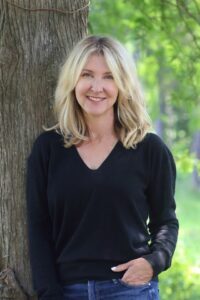
Jennifer graduated from Louisiana State University in Baton Rouge. Geaux Tigers!
She has written and produced three indie short films that each made top 20 at the Louisiana Film Prize and were awarded at festivals around the world.
She lives in Louisiana with her husband, two daughters, two dogs, one cat, and plenty of horses, mini ponies, and mini donkeys in a place where swamps and winding trails are the norm.
When she’s not writing, she’s on a tennis court laughing and providing job security for her coach.
Find out more about Jennifer by clicking either link: Instagram & FacebookElena Hartwell/Elena Taylor

Header image from Pixabay
The post Jennifer Moorhead: Debut Thriller Author appeared first on The Mystery of Writing.
June 24, 2024
The Honeymoon Homicides: Cozy Mystery
The Honeymoon Homicides by Jeannette de Beauvoir [image error]
Guest Post + Excerpt + Book & Author Info
Don’t miss any blog tour post! Click the link here.
The Honeymoon Homicides
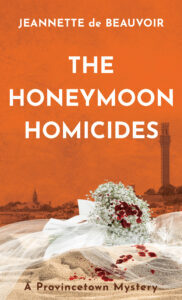
A Sydney Riley Provincetown Mystery
Despite an unforeseen disaster ruining her carefully planned wedding reception, hotelier Sydney Riley is undaunted as she and her brand-new husband Ali leave for their honeymoon in the dunes of Cape Cod’s National Seashore. But even in this deserted location, Sydney uncovers clues that might have a bearing on the wedding fiasco.
Despite hoping for a new life, she’s drawn into yet another murder investigation—this time to protect Ali, who’s been called away on a secret and dangerous assignment.
Can Sydney find the murderer(s) before Ali is harmed, or will a week in the dunes be her only memory of their married life?
Book Details:
Genre: Cozy with an edge; Amateur Female Sleuth. Published by: Homeport Press Publication Date: June 13, 2024 Number of Pages: 188 ISBN: 9798986865447 Series: Sydney Riley (Provincetown) Mystery, 10th in a Series of Stand-Alone Books
To purchase your copy of The Honeymoon Homicides, click any of the following links: Amazon | Barnes & Noble | BookShop.org | Goodreads
Guest Post from Jeannette de Beauvoir — Author of The Honeymoon Homicides
The Beginning isn’t the Beginning
A lot of mystery readers will tell you they don’t care about history.
For them, reading is all about experiencing a fast-paced modern thriller, a whodunit, a crime drama. Figuring out where the red herrings have been scattered, trying to beat the protagonist to the solution.
But what I’d like to suggest is that nearly all mysteries really are, at their core, all about the past.
When you open a mystery, you’re not coming in at the first act. You’re seeing the result of something that happened before you picked up the book—the beginning of a mystery story always deals with the end of something else. In murder mysteries, that tends to be a human life. The reader and the protagonist arrive on the scene several acts in: whatever untenable situation led to the killer seeing no way out other than murder happened some time ago. It could be in the recent past, leaving the pain still shimmering in the air when the protagonist arrives; or perhaps the motive is old and decayed and was years in the making. But either way, it didn’t just land at our feet fully formed. There’s a dark history there that needs to be unraveled if the mystery is to be solved.
So mystery readers and mystery writers are all—in a sense—historians, delving back into the past to see what possibly insignificant detail drove the victim along a certain path to meet their death, what terrible situation the panicked killer sought to remedy through violence.
And maybe that’s important. Maybe we always need to find the path coming from the past in order to get to the future. Maybe history isn’t all that uninteresting.
I’ve been exploring the past in one way or another for most of my life. When my friends in primary school wanted to be astronauts or rock stars or fashion designers when they grew up, I wanted to be an archaeologist. When around age ten I started writing fiction, I began with a novel set in the middle ages. And I think that a lot of what I write now—present-day mysteries with causation rooted in the past—is a natural development for someone who believes the past never really goes away.
For the past several years I’ve been traveling around libraries, book clubs, schools, and other organizations, presenting an interactive event I call Candlestick in the Library. In just under an hour and a half, it shows people how a mystery is conceived and written. Together we assemble characters, motives, weapons, and places, and then we knit them all together into a semi-coherent (and often hilarious) story. And of course most people want to start with the protagonist, and are a little bemused when I point out that the killer and the victim take precedence in the order of things. Without them, the protagonist has nothing to investigate!
We all have skeletons in our closets, whether the “we” refers to us as individuals, as communities, as families, or as countries. There are things we’ve all done we’d prefer stayed buried, things we only remember late in the night with shame or embarrassment. So even as we tend to identify with the detective in a mystery, there’s also a part of each of us that also understands the fear or need that drove the killer to act, to protect themselves in the only way they saw possible.
That empathy is an important component to mysteries. Early detective novels—featuring Sherlock Holmes, for example—focused on weaponry, timetables, access; people and their motives were scarcely mentioned. But G.K. Chesterton with his Father Brown mysteries ushered in an age of understanding others, focusing on motives and individuals, and it’s thanks to him that we now love to read about the characters in mystery as much as we enjoy the plot. People are complicated, their backstories are complicated, and we honor that when we take the time to understand what past events led to current choices and decisions.
It’s not a bad way to look not just at history but at life, too: with an empathy that understands everyone’s life and circumstances are as important to them as our own are to us.
And of course our own backstories fascinate us—there’s a reason why genealogy is so popular. You get to see whose lives led up to yours, what adventures they may have had, how they came to do what they did. Uncle Ernie may have had crooked teeth and Grandma could have been something of a drinker—but they’re part of your past, part of your family, part of who you are.
Part of your history. Every story has a beginning, whether it’s the story of your life or the story in a mystery novel, and that beginning can have its roots well in the past. And as a culture, as readers, as writers, we’re imperfect at understanding why we do what we do. We can’t set up experiments to see how situations will turn out, so looking at the past has to be our most vital evidence as we try and figure out why our complex species does what it does.
Like murder.
Read an excerpt of The Honeymoon Homicides:
Chapter One
The victim generously waited to be murdered until the final vows had been spoken and we were officially declared married. And that’s pretty much the best thing I can say about my wedding.
Not that it hadn’t begun auspiciously. I used to be a wedding coordinator at Provincetown’s Race Point Inn—of which I was now co-owner—and so I had considerable experience wrangling vendors, petulant family members, and weather forecasts. And my partner Ali and I had reached an uneasy compromise with my mother in terms of the size and lavishness of the affair—no small feat, as my mother is abnormally addicted to big weddings. We were in addition juggling two religions and two cultures, as Ali is Muslim and his parents and extended family are all Lebanese. And we had somehow navigated all that.
What we hadn’t reckoned with, of course, was the body falling through the awning onto the terrace and, of course, the screams that followed.
***
“Sydney, you are not going to make this stop you,” was what Mirela said.
“Stop me from doing what?” I probably sounded distracted, mainly because I was distracted. The police, in the persons of a bunch of uniformed officers and my sometimes-sort-of-friend Julie Agassi, who was the head of Provincetown’s small detective unit, were swarming all over the place, putting up tape and directing people away from the immediate area. The rescue squad was there, too, though what they thought they could do to help a man who seemed to have broken every bone in his body and spread a great deal of his viscera around the patio was unknown. The wedding guests, in various stages of shock and occasional hysteria, had allowed themselves to be herded into the inn’s restaurant, already set up for the wedding dinner.
My mother was demanding loudly how such a thing could have been allowed and asking about suing the owners, apparently forgetting for the moment that I was one of them. My newly minted husband, Ali, was dealing with his parents, who’d seen more than enough of this kind of violence before they’d permanently fled Beirut and were dealing with some sort of PTSD shock.
And now my best friend Mirela was giving me… what? A pep talk?
“You should go now,” she said. “Leave for the honeymoon. You and Ali. There is no dinner. There is no dancing.”
“We weren’t doing dancing anyway,” I said blankly. After the initial shock, it was dawning on me that I was standing twenty feet from a corpse, wearing a bloodied wedding gown, and realizing—priorities being priorities—that I was not going to have, after all, a wedding feast catered by Adrienne the diva chef, who kept our restaurant’s Michelin stars intact and who has made P’town a destination for world-class dining. “This,” I said to Mirela, “is the worst wedding I’ve ever planned.”
She tossed the blonde hair escaping from her up-do—not that she looked any less gorgeous a little bedraggled—and peered at me. “Are you feeling all right?”
“No,” I said.
She took my elbow and turned me away from the scene unfolding on the terrace. “What you need,” she said firmly, “is a drink.”
“What I need is fourteen drinks,” I said. “But I should check on my mother—”
“The last thing you do is check on your mother,” she said. Mirela and my mother are not what you might call simpatico, mostly due to my mother’s criticisms of Mirela’s single status and her underappreciation of Mirela’s art (which earned her grudging respect only when she learned that the work routinely sold in the six-figure range).
“It doesn’t look like anything,” was her response to the abstract paintings that were now exhibited worldwide, and, “I don’t understand why she can’t find a husband.”
Mirela steered me to the bar area, already filling up with wedding guests in various stages of shock and all, apparently, requiring alcohol. She caught the bartender’s eye—a skill all the Bulgarians I’ve ever met have perfected—and he uncorked a bottle of wine and handed it across to her. She grabbed it without letting go of my elbow, and pulled me out of the restaurant and over to the small lounge area that had the advantage of having a door, which she closed behind us right away. “Here,” she said, handing me the bottle, and rooting around in a cupboard for a glass.
I was looking at the label in some dismay. “This is Châteauneuf-du-Pape,” I protested.
“Of course it is.” Her voice was brisk. “You need a drink.”
“A deplorable reason to drink this,” I insisted. It’s my favorite wine ever.
“Even more deplorable, sunshine,” said Mirela, “is that your guests will drink it if you do not.”
I sat down on the couch. I was understanding what romance writers were talking about when they used terms like “crumple.” I took a swig of wine straight out of the bottle, heaping blasphemy on blasphemy. “Where’s Ali?”
“He will find us.” She gave up trying to locate a glass and slanted a look over. “You are regaining color,” she informed me.
Which was more than we could say about the fellow out on the inn’s patio.
When the door opened, it wasn’t Ali standing there, but Julie, officious and sharp, her blonde hair and blue eyes making her look, always, like some kind of ice princess. “I thought you might be hiding somewhere,” she said.
I gave a weak gesture with the wine bottle. “Join the party,” I said.
She narrowed her eyes. “Are you drunk?”
“Not yet.”
“Then hold off.” She half-turned and spoke to someone behind her, and another cop came in, pulling the door closed behind him. He looked around the room, fast, the way cops do when they go anywhere, and found a straight chair and pulled out a notebook.
I know about what cops do. My husband is one of them. “It’s an odd word, isn’t it, husband?” I said. “Sounds sort of like a thump.”
Julie ignored me and said to the uniform, “Interview Sydney Riley, eight-fifteen pm.” She sat on a chair she pulled over close to the couch, snapping her fingers in front of my face. “Focus, Sydney,” she said.
I sighed and put the bottle on the floor. Not too far away, just in case.
She still wasn’t sure of me. “Can you go find Ali?” Julie asked Mirela, who nodded and slipped out the door. Even Mirela knows not to argue with her. “Tell us what happened here,” said Julie.
I was having some trouble focusing on her. How can you feel drunk on one swig of wine? “I got married,” I said. “Somebody died.” I paused. “Who was he?”
“Not one of your wedding guests,” Julie said, almost absently. She was looking at a list, probably supplied by Mike, the Race Point Inn’s co-owner. He’s frighteningly competent. “Unless he was a last-minute addition? Do you know someone named Barclay Cargill?”
“That can’t be a real name,” I said automatically, then realized she was serious. “No. No, I’ve never heard of him.”
“He was staying at your inn.”
I stared at her. “We have eighty rooms,” I said. “I’m not the manager. You really think I know everybody?”
“You may remember him.” She produced her iPhone, flipped it around a bit, then extended it to me. The man in the photo had dark hair and a beard that were starting to turn gray; what was most remarkable was that he was wearing a three-piece suit. People in P’town don’t wear three-piece suits.
Some people in P’town don’t wear much at all.
Julie retrieved her phone. “He’s an attorney,” she said.
She’d gotten her information remarkably quickly. “Okay,” I said. “So did he jump, or was he pushed?”
She was unamused. “You’re being remarkably flippant about someone’s violent death.”
“I’m remarkably flippant about anyone who gets murdered in the middle of my wedding.” I plucked at my ivory lace overskirt. “Just thought I’d remind you, in case you thought I was wearing this for a costume party. If he weren’t already dead, my mother would have killed him by now.”
She sighed. Julie sighs a lot when she’s around me. She’s even been known to refer to me as Provincetown’s answer to Miss Marple, and she doesn’t mean that in a good way.
It’s not exactly my fault that when someone gets murdered I end up having something to do with figuring it out. Julie thinks there’s some sort of cause and effect, but there really isn’t. I just know a lot of people—and it’s a small town.
But having a murder committed during my wedding? That was taking this whole amateur sleuthing thing just a little too far.
As though reading my thoughts, Julie said, “All right. You don’t know this man. Good. Can I take it that you won’t be trying to figure out what happened to him?”
The events of the past hour were starting to turn nasty on me, and I really wanted to be with Ali, not Julie. “No more than you are,” I said sweetly. It was a jab, of course: in Massachusetts, possible homicides are investigated by the state police, not the local force. I knew it was a sore spot with Julie, who thinks she’s better at it than they are. She can secure the scene, take preliminary statements, and assist the Staties when they arrive. “Is that all? Because—”
The door swung open and I’ve never, I think, been happier to see anyone. “Are you all right?” asked Ali. He didn’t even wait for me to respond. “She can give her statement later,” he said to Julie.
“She needs to do it while it’s fresh in her mind,” Julie said.
“Like most of our guests, she didn’t see anything until the individual was already on the ground,” said Ali. “She doesn’t need this now.”
“Maybe you two could stop talking about me like I’m not here?” I asked, my voice sharper than I’d meant it to be. Ali came and sat beside me, carefully moving the bottle of Châteauneuf aside so he wouldn’t knock it over. He knew I’d need it later; it wasn’t exactly an occasion for Champagne, despite all the Veuve Clicquot that Martin, the maître d’, had waiting for us on ice.
Not that Ali drank alcohol, anyway.
I slid my hand into his; for all my rather aggressive petulance, I was feeling a little lost and a little sad. It was finally dawning on me that someone had died. At my inn. At my wedding.
Ali looked, of course, wonderful. He annoyingly always does. He has beautiful dark eyes and beautiful olive skin and dark hair that curls ever so slightly and is always just a little too long, and designer stubble that makes him look sexy and a little dangerous.
Well, he is an agent for Immigration and Customs Enforcement. The danger is real.
Julie was giving up. She jerked her head towards the other cop, who closed his notebook, stood up, and left the room. “You may be needed later on,” she said to me. “Both of you, in fact. Should the state police have any questions about the individual.” Oh, yeah, I’d hit a nerve.
I liked that business about the “individual.” I’d come way too close to saying something about him crashing the party. It must have been the shock; I hadn’t had nearly enough wine to account for it.
“We’re leaving in the morning,” I said.
“You can’t—” she started, automatically, and I interrupted her. “Honeymoon,” I said firmly.
“We’ll be back next week,” said Ali.
Even Julie Agassi knows when she’s beaten. She gave us one last stern official look, and fled.
“Well,” said Ali, putting his arm around my shoulder. “How do you like married life so far?
*** Excerpt from The Honeymoon Homicides by Jeannette de Beauvoir. Copyright 2024 by Jeannette de Beauvoir. Reproduced with permission from Jeannette de Beauvoir. All rights reserved.
Jeannette de Beauvoir — Author of The Honeymoon Homicides
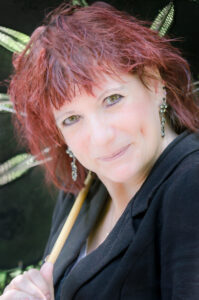
Jeannette de Beauvoir is the author of mystery and historical fiction—and novels that are a mix of the two—as well as a poet who lives and works in a cottage beside Cape Cod Bay. She is a member of the Authors Guild, the Mystery Writers of America, the Historical Novel Society, and Sisters in Crime.
To learn more about Jeannette, click any of the following links:
JeannettedeBeauvoir.com
Goodreads
BookBub – @JeannettedeBeauvoir
Instagram – @JeannettedeBeauvoir
Pinterest – @JeannettedeBeauvoir
Facebook – @JeannettedeBeauvoir
Visit All the Stops on the Tour!
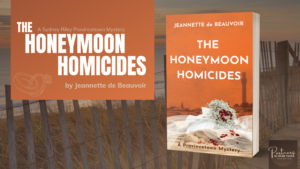
06/17 Showcase @ Mystery, Thrillers, and Suspense
06/18 Review @ Country Mamas With Kids
06/19 Review @ Book Reviews From an Avid Reader
06/20 Showcase @ Books, Ramblings, and Tea
06/21 Showcase @ Silvers Reviews
06/22 Review @ Paws. Read. Repeat
06/23 Guest post @ Boys Mom Reads!
06/24 Guest post @ The Mystery of Writing
06/26 Interview @ darciahelle
06/27 Book Talk with Fran Lewis Radio Interview
06/27 Review @ Just Reviews
06/27 Showcase @ Celticladys Reviews
06/28 Showcase @ Archaeolibrarian – I Dig Good Books!
07/01 Review @ FullyBookedInKentucky
07/02 Review @ Pat Fayo reviews
07/03 Showcase @ Binge Reading Books
07/08 Showcase @ Cozy Home Delight Book Reviews
07/09 Interview @ Hott Books
07/11 Review @ Words by Webb
07/12 Review @ The Page Ladies
Elena Hartwell/Elena Taylor

The post The Honeymoon Homicides: Cozy Mystery appeared first on The Mystery of Writing.
June 22, 2024
A Zodiac Mystery: The Light Beside the Sea
A Zodiac Mystery: The Light Beside the Sea by Connie di Marco [image error]
Excerpt + Book & Author Info + a Giveaway!
Don’t miss any blog tours, click the link here to read more!
A Zodiac Mystery: The Light Beside the Sea
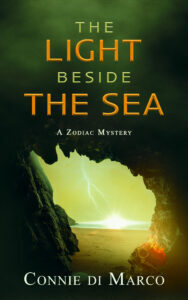
So many deaths . . . An elusive shaman, a creature of the underworld, Here to unleash evil? Or bring justice to the wronged?
San Francisco astrologer Julia Bonatti has been haunted for years by the hit and run death of her fiancé, Michael Sefton. The driver of the vehicle was never apprehended. The lone witness to the accident spoke to no one and now is dead. Even the cold case detective assigned to the case died before any resolution was found. Every time Julia thought she might be getting close to an answer, each clue led only to a dead end.
Michael, a graduate student, had just returned from an archeological dig in Guatemala when he was killed. But why did he mail his journal to Julia for safekeeping before his return home? What was he afraid of? Why did another graduate student fall to his death on that trip? And now, another man connected with that journey has been murdered closer to home. And the murderer hasn’t finished.
When Julia finally finds the courage to delve into the journal Michael sent to her years before, she learns of the undercurrents, jealousies and anger between members of the group. She begins to understand the pressure and fear her fiancé was coping with and his suspicions of their University mentor who was most likely engaged in unethical and illegal behavior.
But events soon take a darker turn when Julia finds a likeness of the Maya god Hunhau, god of death and the underworld, on her doorstep. A strange man covered with markings and tattoos keeps appearing to her but no one else seems to see him. With guidance from another professor she’s introduced to a world she never knew existed.
Is the man she sees human? And is he under the sway of the Maya god of death?
Will he unleash evil or is he here to right a wrong done to his people?
Julia must move quickly or her death will be the next.
Book Details:
Genre: Traditional mystery
Published by: Indie
Publication Date: May 6, 2024
Number of Pages:370 est
ISBN: 979-8989009596 | eBook 9798989009589
Series: The Zodiac Mysteries, Book 5
Purchase your copy of The Light Beside the Sea: A Zodiac Mystery at Amazon | Barnes & Noble | Goodreads
Read an excerpt of this Zodiac Mystery:
Excerpt
Rafael followed Market Street, turning north on Castro. I people-watched along the ride, joggers, couples walking hand in hand, shoppers with bundles heading down Market Street. People leading their very normal lives. Not haunted by an imaginary shaman controlled by a mythical Maya god of the dead. We reached Geary and turned west before I asked, “Where are we going?”
He smiled. “Marin County. To a cave on Mount Tam.”
“Really?” Mount Tamalpais is probably the last place I’d choose to visit at night. Tamalpais, the Miwok Indian name for a coastal mountain, is a dark foreboding place between the town of Mill Valley and the Pacific Ocean. In the summer, musicals are held in an amphitheater, while Girl Scouts and Y kids attend summer camps. But Mount Tam has a dark history of ghost stories, like the Indian lovers from warring tribes who were poisoned, one buried at Mount Tam, the other at Mount Diablo, kept separate even in death. The mountain is infamous for being the stomping grounds of the Trailside Killer in the 1970’s and 80’s, his victims strewn along the hiking trails. To this day, the killer still cools his heels in San Quentin in spite of his death penalty conviction.
“Does that frighten you?”
“Uh . . . yeah . . . a little. The road up to the top has always been scary. It’s very dark and twisting even on a sunny day.”
“You’ll be safe with me and the others.”
We entered the tunnel from Park Presidio leading to the approach to the Golden Gate Bridge. “How did you come to be invited?”
“Through Manuela and her connections in the community. I find these religious rituals and myths fascinating.” He laughed, “You can see why some people in the academic community regard me as a crack pot.” I raised my eyebrows but kept my mouth shut. Traffic was light on the bridge as we sped over the Golden Gate straits. A thick blanket of fog surrounded us, with just enough visibility to follow the taillights of the car in front. The foghorns were in full voice. “The creation myth, or I should say, the collection of myths of the Maya is known as the Popol Vuh . . .”
“I remember reading about that. Isn’t it also called The Light that Came from Beside the Sea?”
Rafael nodded, “Yes, that’s one of its many names. The religion of the Maya is still practiced today in Central America, but also here, although it’s largely kept under wraps from the greater society. It’s amazing how these ancient rituals have survived all these centuries. The people pray for health and wealth of course, just as many others do and it’s evolved into an interesting blend of the Pre-Columbian and the Christian.
I lowered my window a little as we followed the twisting road to the top of the mountain, breathing in the fragrance of eucalyptus and wild fennel from the hillside. “Why a cave for the ceremony?”
“Caves have always been very important to the Maya. They’re believed to be portals to the other world, as are holes in the ground. Cenotes, they’re called. They’re dark, secretive places with strange geological formations and the realm of deities and demons. Unlike in ancient times, women are allowed inside the caves now. Candles and incense are burned for protection and for safe passage through the cave.” He hesitated, “Julia, some of this may be unlike anything you’ve ever seen. I just want you to be prepared.”
“This should be very interesting, Rafael. I just hope whatever I see, others see too.”
Rafael continued, “Mountains are also very important in their belief system, mountain passes, things like that. That’s where spirit activity takes place. Shamans are very important persons. They’re usually village leaders and healers,” Rafael stole at glance at me. “Just keep this in mind, Julia. Healing is the main job of the shaman. Perhaps your shaman is here to heal.” I only hoped he was correct, that my shaman was here to heal, not to murder. The narrow road continued to wind upward. I felt as if we had driven for a very long time. “Have you ever been here before?”
“No,” he shook his head. “But I do have directions. The sign should be coming up soon.” He peered ahead at the road. “There it is.” I looked to see what he had spotted but couldn’t see any indication.
“You didn’t notice but there was a cluster of feathers on that tree trunk.” He slowed and turned left on to a fire road between the trees. We traveled another thirty yards perhaps and came to a clearing where several cars and vans were parked. Rafael pulled to the side near the trees and cut the engine. He turned to me, “We must be very quiet. There are some private homes on the other side of the mountain and we wouldn’t want anyone calling the authorities. We can’t light any fires in the woods, that would be very dangerous, but inside the cave it’s safe.”
We climbed out of the car as silently as possible. On the other side of the clearing a dark hole in the side of a rocky cliff loomed. Rafael took my hand and we walked toward the cave opening. Several groups of people in ordinary street clothes milled about just inside the mouth of the cave. A fire burned in the distant interior sending flickering shadows against the stone walls. The aroma of incense and pine needles was very strong. My cell phone began to ring. Rafael looked at me. “Sorry,” I swiped the screen to answer. It was Maggie. “I can’t talk right now,” I whispered. “Can I call you later?” She answered, “Yes. Call me later.” I ended the call and turned off the phone.
We walked deeper into the cave where many people stood silently and respectfully as a man tended the central fire that rested on a heap of stones and logs. One woman stood to the side against a wall and handed each of us a small candle as we passed. Once inside, a steady murmur of sound engulfed us, a mixture of prayer and chanting. As I watched, the others gathered closer and stood in a large circle around the fire. The chanting became louder. A woman next to me held her lit candle up, indicating I should light mine from hers. In turn I passed the flame to Rafael who did the same.
As my eyes grew accustomed to the dark, I saw plaster figurines of various saints resting on rocks around the cavern. One was the figure of a man, perhaps John the Baptist. The other, the Virgin Mary. Rafael caught my look. He leaned over, his mouth next to my ear and whispered very quietly, “In some rituals, Christ is the Sun God and his mother the Moon Goddess. Fascinating stuff.”
The gathering in one part of the cave parted. A man stepped into the center of the circle. I gasped involuntarily. His face was painted in a similar fashion as the strange creature I had seen. Vertical stripes of red and black. Small white dots along the black stripes. His eyes were completely encircled in black. Rafael, sending my shock, squeezed my hand tighter. After the painted man, another stepped forward, carrying a small cage, a live chicken inside.
The priest . . . shaman . . . raised his hands above the fire. Everyone fell silent. An elderly woman moved forward, walking slowly as though in pain. Two others urged her on as she approached the fire. A second woman followed her with a basket of eggs in her hand. The shaman took an egg and holding it in his hand, traced it along the elderly woman’s body several times. He prayed out loud in a strange language as he worked. I watched in fascination as he broke the egg into a bowl and studied the pattern of the yolk. He moved his hands around and muttered further incantations. Then he reached inside the small cage and holding the chicken in his hands, broke its neck. I shuddered and looked away. Rafael squeezed my hand tighter as a lone coyote howled in the distance.
There was complete silence after this astonishing performance and finally someone blew a note on a reed instrument, a cue that the ceremony was over. A woman’s voice sang out, then joined by others, a common Christian hymn I had heard many times, but couldn’t name. The voices began to swell, filling the cavern and echoing off the stone walls. When the hymn ended there was complete silence. One by one and in groups people exited the cave silently. We followed, Rafael still tightly holding on to my hand as if afraid I’d run shrieking out into the night. At the mouth of the cave I turned back. The shaman had disappeared and a lone man was dampening the fire.
*** Excerpt from The Light Beside the Sea by Connie Di Marco. Copyright 2024 by Connie Di Marco. Reproduced with permission from Connie Di Marco. All rights reserved.
Author of the Zodiac Mysteries: Connie di Marco
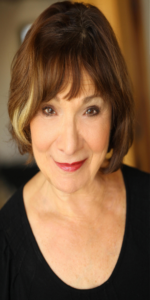
Connie di Marco is the author of the Zodiac Mysteries featuring San Francisco astrologer Julia Bonatti, a woman who never thought murder would be part of her practice. The Light Beside the Sea is the fifth novel in the series. Earlier books are The Madness of Mercury (Zodiac #1), All Signs Point to Murder (Zodiac #2), Tail of the Dragon (Zodiac #3), Enter a Wizard, Stage Left (an e-book prequel novella), and Serpent’s Doom (Zodiac #4).
Writing as Connie Archer, she is also the author of the national bestselling Soup Lover’s Mysteries from Penguin Random House: A Spoonful of Murder, A Broth of Betrayal, A Roux of Revenge, Ladle to the Grave and A Clue in the Stew. You can find her excerpts and recipes in The Cozy Cookbook and The Mystery Writers of America Cookbook. Visit her website at ConnieArcherMysteries.com. Facebook.com/ConnieArcherMysteries and X/Twitter@SnowflakeVT.
Connie is a member of the Mystery Writers of America, International Thriller Writers, Crime Writers Association (UK) and Sisters in Crime.
To learn more about Connie and the Zodiac Mysteries and read excerpts click on any of the following links:
ConniediMarco.com
Goodreads
BookBub – @Connie_di_Marco
Instagram – @Connie_di_Marco
Twitter/X – @AskZodia
Facebook – @connie.di.marco.author
Visit all the Stops on the Tour!
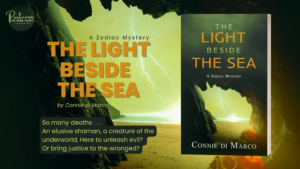
06/03 Review @ Country Mamas With Kids
06/04 Review @ Its All About the Book
06/05 Review @ ashmanda. k
06/05 Showcase @ Books, Ramblings, and Tea
06/07 Review @ Why Not? Because I Said So Book Reviews
06/11 Showcase @ Celticladys Reviews
06/12 Review @ Pat Fayo reviews
06/13 Interview @ darciahelle
06/14 Review @ Cozy Up With Kathy
06/15 Review @ Scrapping and playing
06/18 Review @ The AR Critique
06/21 Review @ Novels Alive
06/25 Interview @ Hott Books
06/26 Guest post @ Cozy Home Delight Book Reviews
06/27 Review @ Guatemala Paula Loves to Read
06/28 Review @ Melissa As Blog
11/29 Mysteries to Die For: Toe Tags Podcast
Elena Taylor/Elena Hartwell

The post A Zodiac Mystery: The Light Beside the Sea appeared first on The Mystery of Writing.
June 20, 2024
Breach: A Terrifying Summer Adventure
Breach: A Terrifying Summer Adventure by Holly S Roberts
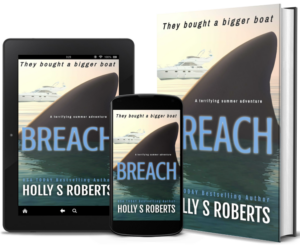
Craving the vastness of the open sea, Kate and her family set out on a journey of forgiveness and healing aboard Ryan’s Gift, their newly remodeled yacht. After a tragic accident, it’s imperative that Kate returns to the ocean, the place she once called home, in an attempt to restore her spirit.
In the middle of their idyllic voyage, the nightmare begins. With no power or communication, a monster lurks below the surface and the family must find a way to defeat the darkness before it destroys them.
Experience this gripping story of a family’s fight for survival and a terrifying reckoning from the deep.
Breach: A Terrifying Summer Adventure
Psychological Thriller
Setting – Off the coast of California
Publisher : Independently Published (March 22, 2024)
Hardcover : 202 pages
ISBN-13 : 979-8320606989
Digital: Wicked Story Telling (June 20, 2024)
ASIN : B0CQYXJ3T1

“Eighteen months had passed since the accident that left Kate with an incomplete spinal cord injury, taking away the use of her legs. The rehabilitation center staff had believed her fortunate for retaining some sensation below the waist, but Kate had never felt unluckier” .
“Kate examined the water looking for a dorsal fin. Slight waves from the Sea Doo rocked the yacht. She wheeled herself frantically toward the stern, her pulse hammering as the real threat lurked unseen below”.
“Kate’s voice was a whisper, her hands tense on the wheels of her chair. ‘Ryan, hold on,’ she breathed as the shark’s massive silhouette darted beneath the yacht toward her daughter”.
“With every ounce of her being, Kate focused on the rolling waves. ‘This ends today,’ she declared, determination lining her features as she prepared to defend her family from a terrifying nightmare”.
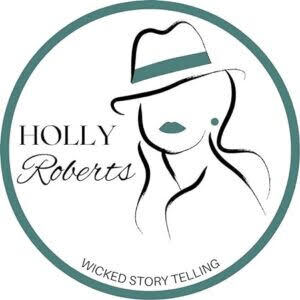 Author of Breach, Holly S Roberts
Author of Breach, Holly S RobertsHolly S Roberts is the USA TODAY bestselling author of thrillers, mysteries, and romance. Her Detective Eve Bennet crime series is a #1 Amazon bestseller. She’s a retired homicide detective who worked high-profile cases in Arizona.
Holly lives high in the mountains with her husband and two spoiled dogs.
Catch up with Holly online at: Website, Facebook, Instagram, TikTok, YouTube, and Goodreads.Author Tour Giveaway! Click the link here to enter.Visit all the Stops on the Tour!

June 20 – The Mystery of Writing – SPOTLIGHT
June 20 – Mystery, Thrillers, and Suspense – SPOTLIGHT
June 20 – Brooke Blogs – SPOTLIGHT
June 21 – Baroness Book Trove – SPOTLIGHT
June 21 – Novels Alive – REVIEW
June 21 – Sapphyria’s Book Reviews – SPOTLIGHT
June 22 – StoreyBook Reviews – SPOTLIGHT
June 22 – Celticlady’s Reviews – SPOTLIGHT
June 22 – Escape With Dollycas Into A Good Book – AUTHOR INTERVIEW
June 23 – Ruff Drafts – SPOTLIGHT
June 23 – FUONLYKNEW – SPOTLIGHT
June 24 – Christy’s Cozy Corners – REVIEW
June 24 – Books, Ramblings, and Tea – SPOTLIGHT
June 25 – Escape With Dollycas Into A Good Book – REVIEW
June 25 – Maureen’s Musings – SPOTLIGHT
June 25 – Rosepoint Publishing – REVIEW
June 26 – Literary Gold – SPOTLIGHT
June 26 – Elizabeth McKenna – Author – SPOTLIGHT
June 26 – Boys’ Mom Reads! – SPOTLIGHT
Elena Taylor/Elena Hartwell

The post Breach: A Terrifying Summer Adventure appeared first on The Mystery of Writing.
June 19, 2024
Broken Bayou: Debut Thriller Copy Copy
Broken Bayou the debut thriller by Jennifer Moorhead
Author Interview + Book & Author Info + Author Pet Corner!Don’t miss any debut author interviews, click the link here for more.Broken Bayou

In this debut thriller, a troubled child psychologist returns to a small Louisiana town to protect her secrets but winds up having to protect her life.
Dr. Willa Watters is a prominent child psychologist at the height of her career. But when a viral video of a disastrous television interview puts her reputation on the line, Willa retreats to Broken Bayou, the town where she spent most of her childhood summers. There she visits her aunts’ old house and discovers some of her unstable mother’s belongings still languishing in the attic—dusty mementos harboring secrets of her harrowing past.
Willa’s hopes for a respite are quickly crushed, not only by what she finds in that attic but also by what’s been found in the bayou.
With waters dropping due to drought, mysterious barrels containing human remains have surfaced, alongside something else from Willa’s past, something she never thought she’d see again. Divers, police, and media flood the area, including a news reporter gunning for Willa and Travis Arceneaux—a local deputy and old flame.
Willa’s fate seems eerily tied to the murders. And with no one to trust, she must use her wits to stay above water and make it out alive.
To purchase your copy of Broken Bayou, click either of the following links: Amazon and Interabang BooksInterview with the author of Broken Bayou, Jennifer MoorheadBroken Bayou focuses on Dr. Willa Watters, a child psychologist who is struggling with her own history. Where did that character come from? Inspiration? Pure imagination?Dr. Willa first came to me when she was a teenager. I got to know her when she was seventeen. Willa appeared to me after a flash fiction contest I entered years ago. The agent holding the contest said my entry would make a good opening to a novel. And boom.
I saw her and her mother and younger sister on a road trip to Broken Bayou, Louisiana. I knew it would be this family’s last trip there, but I didn’t know why. I think meeting Willa at that age helped me see her history and from there I could see how she was shaped by it.
Many of my backstory scenes did not make the final cut but they were instrumental in getting to know her and her troubled family dynamics. I tried to stay in the background as much as possible and let her show me what life was like for her.
Broken Bayou is a small town in Louisiana. Tell us about that community and how you developed it for your first novel?
Broken Bayous is a fictitious town. It’s a mash-up of so many small towns I’ve visited in Louisiana and I’ve always loved the small town vibe. I knew it would be in south Louisiana but I wasn’t sure exactly where. So I pulled up a map and started looking.
I’ve spent time in St. Francisville so I liked the idea that Broken Bayou would be close to that area of the state. Only Broken Bayou would not have the tourism St. Francisville does so therefore not as much money either. I wanted it broken.
Once I had the location, I started fleshing out the town: street names, cafes, antique stores, etc. I drew a map of it and listed what would be there. It was an easy town for me to picture because where I live, I’m surrounded by small towns.
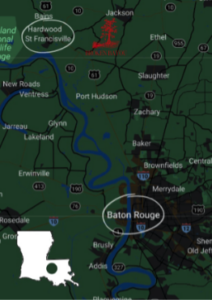
The story started with a simple newspaper article I read several years ago in The Times-Picayune. It was about a missing schoolteacher whose car was discovered in a bayou near New Orleans. But, for me, the really interesting part revolved around what else the divers found. Turns out bayous make good hiding places. That felt like the real story to me and, more importantly, it felt like Dr. Willa’s story.
It got me thinking, what if a missing teacher was only the tip of the iceberg?
My research spanned many fields. I toured the North Louisiana Crime Lab for starters and interviewed a forensic pathologist there who explained the nuances of body identification, especially when found in water. I also interviewed an assistant District Attorney about crime in southern Louisiana, specifically serial killers. They both provided me with stories that fall into the “truth is stranger than fiction” category.
The most fun I had, though, was interviewing a friend who is also a clinical child psychologist. Her knowledge and her stories helped me understand my protagonist so much better. Human behavior fascinates me, especially when it pertains to our pasts. She helped me navigate some tricky terrain about family trauma, mental health, Autism, and the impact our childhoods have on us.
Tell us about your road to publication:Oh boy. In a word … long!
My story is very typical in a lot of ways. Broken Bayou is the fourth book I’ve written. The other three are locked away in a drawer! I was fortunate enough to get an agent with my third book, but that book did not sell to publishers. Lots of lessons learned in that process. That agent and I ended up amicably parting ways. I thought I’d indie publish my next book but after it was edited my writing group said maybe I should at least try to traditionally publish. So, like a crazy person, I went back into the query trenches!
I started off querying Broken Bayou as women’s fiction and got lots of full requests and no offers so I hit pause. I hired a freelance editor, and the first thing she said is—this is crime fiction. OH!
So I did another edit and pressed play again, this time as a crime fiction novel. And bingo, I found my agent. We went out on sub to publishers and on our second (or third) round found an editor I am eternally grateful for! I honestly didn’t believe I had a book deal until I signed the papers and they signed the papers. I thought for weeks someone was going to say, “Oh wait, we made a mistake.” Thankfully, that was just my insecure writer voice talking!
In addition to writing mysteries, you are also a filmmaker. Tell us about your film projects and how they impact your storytelling:
While my third book was out on sub (and getting rejected!) to publishers, I got an opportunity I couldn’t pass up. Distractions are key when a writer is querying or out on sub.
A friend’s daughter wanted to direct an indie short film for Louisiana Film Prize, and she needed a writer. I jumped at the chance then Googled “how to write a short film”. Ha! She guided me through the crazy process and helped me write what would become the first of three indie shorts we produced together. We even made one in May of 2020 on my iPhone with only 4 people on set.
Side note: my husband and father opened a sound stage in 2005 in my hometown so I had the opportunity to visit a lot of TV and movie sets, and it is fascinating to watch behind the scenes. So when it came time to make my indie shorts I understood a little bit of the process but, wow, did I learn so much more. Watching a scene on a monitor is fascinating as a writer. It’s like how I picture a scene in my book when I’m writing it.
During filming, I watched through the monitor and studied what it showed, what it didn’t, how the actors moved in the space, mannerisms and language and everything in between. I think it gave me a wonderful perspective on scene building and character development. Second side note: my sister is the lead actress in all of my films.
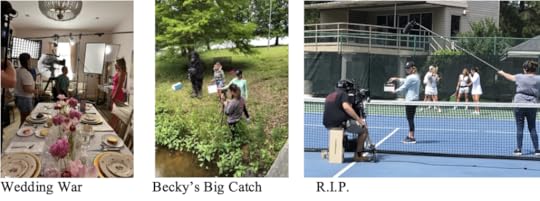
What are you working on now?
I’m working on a companion book to Broken Bayou. I’ve taken a character from Broken Bayou and I’m writing their story. It’s in the first draft stage so I’m not exactly sure where it’s going (warning – pantser alert) but I loved this character, so I want to follow that story and see where it takes me. But I don’t want to say which character it is yet!
Words of Wisdom for Aspiring Writers:
Find your tribe. My writing group is the glue that held me together during this process. They supported me, brainstormed with me, edited with me, and talked me off the ledge when I’d call and say, “What in the world am I doing tyring to be a writer.” Finding your people is instrumental in being a good writer, and it also gives you lots of comedy relief!
Author Pet Corner!
 Bandit! Dolly! and Bibiana!
Bandit! Dolly! and Bibiana!Bandit – 12-year-old black and white Goldendoodle who loves golf cart rides and chasing squirrels. He does not love thunderstorms.
Dolly – 1 ½ year old Goldendoodle who loves to paddleboard with me and is slightly obsessed with her older brother.
Bibiana – An animal shelter rescue kitty whose age is unknown and who rules the house with an iron paw! My girls named her after a contestant on The Bachelor TV show!
Jennifer Moorhead — Author of Broken Bayou

Jennifer graduated from Louisiana State University in Baton Rouge. Geaux Tigers!
She has written and produced three indie short films that each made top 20 at the Louisiana Film Prize and were awarded at festivals around the world.
She lives in Louisiana with her husband, two daughters, two dogs, one cat, and plenty of horses, mini ponies, and mini donkeys in a place where swamps and winding trails are the norm.
When she’s not writing, she’s on a tennis court laughing and providing job security for her coach.
Find out more about Jennifer by clicking either link: Instagram & FacebookElena Hartwell/Elena Taylor

Header image from Pixabay
The post Broken Bayou: Debut Thriller Copy Copy appeared first on The Mystery of Writing.
June 18, 2024
Map of My Escape: New Mystery
Map of My Escape by Cheryl L Reed
Author Interview + Book and Author Info!Don’t miss any author interviews! Click the link here.Map of My Escape

The shooting of a homicide detective is captured on film by a mysterious figure from a second-floor window, implicating Riley Keane, an anti-gun activist and a school shooting survivor. Riley flees Chicago for a frozen island in Lake Superior. A race to find her ensues between her secret lover—Chicago politician Finn O’Farrell—a corrupt police lieutenant, and the mysterious cameraman who extorts Riley’s family and Finn. Finn’s entanglement with Riley and the extortionist threatens his ambitious political career.
On the island, Riley ingratiates herself into the close-knit community, but when she witnesses both an islander’s murder and another death in a suspicious boating accident, the local sheriff starts asking questions that begin to unravel her true identity. As the sheriff and the FBI are closing in on Riley, Finn faces media pressure to reveal his mysterious role in that long ago school shooting. If the facts come out, Finn may go to prison, but his biggest fear is that the truth will forever sever his relationship with Riley.
Praise for Map of My Escape:“Atmospheric and gritty, Reed’s tale of a woman on the run from her own shocking past will keep you rooting for her until the end. A dark thriller with a redemptive ending from a master of suspense.”
~ Jamie Freveletti, International Bestselling author of Blood Run
“Taut, atmospheric and unputdownable. Reed knows how to keep you turning pages!”
~ Candice Fox, International Bestselling author of Crimson Lake, now an ABC series Troppo
“Bending genres of police drama and adventure thriller, The Map of My Escape is both original and breathlessly page-turning!”
~ Wendy Walker, International Bestselling author of Don’t Look For Me
“Cheryl Reed’s Map of My Escape is a character-driven thriller, a poignant opposites-attract love story, and a journey of self-discovery. As secrets unfold and twists abound, Reed keeps us on a razor’s edge. An absolutely gripping read!”
~ John Copenhaver, award-wining author of The Savage Kind and Dodging and Burning
“Map of My Escape combines tragic events, engaging characters, and unique locations to give readers one hell of a ride.”
~ Elena Taylor, author of All We Buried and the Eddie Shoes mysteries.
Genre: Mystery and Detective
Published by: Running Wild Press
Publication Date: June 18, 2024
Number of Pages: 402
ISBN: 9781960018175 (ISBN10: 19600018175)
Riley Keane at her best is the fierce and determined woman we’d all like to be in challenging moments. But Riley isn’t a caricature, she’s very human and doesn’t always have the best judgment.
Riley is fearless because she’s already lived through the most horrific day of her life when she survived a mass shooter who killed dozens of her classmates, and her brother. That tragic event made her become a fierce anti-gun advocate and laser focused on getting military grade weapons off the streets.
Her best friend, a Chicago cop, who also survived the shooting with Riley at their high school, takes her to stakeouts and dangerous places most women would be afraid to go. She does this so she can learn more about how drugs and guns are being illegally trafficked.
Riley’s a lone wolf, and a woman of many conflicts, chief among them is her secret love affair with a Republican Chicago councilman, an advocate of the Second Amendment—something Riley is diametrically opposed to.
She’s a woman of surprises and likes to shock her lovers with strategically placed tattooed messages.
Map of My Escape takes place primarily in Chicago and a small island in Lake Superior, tell us about those environments and how they impact events.
Chicago is important in this book because it is the capital of violence in this country. More than 3,000 people were shot in the city last year. As a former reporter in Chicago, I wanted to write a story about gun violence from multiple perspectives. This isn’t an anti-gun book, but rather a book that explores multiple opinions on guns from those intimately involved with guns or victims of guns.
Chicago is also an important setting because it has a large (and often) corrupt police force, heavily armed gangs, and a long-standing war between these two entities. It also is six miles from a state that has almost no restrictions on guns. So it is emblematic of how much we need federal laws to address gun violence and not a band-aid state-by-state approach.
Lake Superior is an important locale in the book. I have been visiting the shores of Lake Superior for years and I find it a fascinating and magical place. I love the Apostle Islands, which in the book I have renamed the Disciple Islands and moved them slightly so that they aren’t off Wisconsin’s shores, but Northern Michigan’s.
Madeleine Island, the main habitable island in the Apostle chain, has a history as a violent place for young Native American girls who were sacrificed to appease the rain gods. I always wanted to see if I could survive a winter on the island. I came close one year when I rented a remote summer cottage on the shores of Lake Superior and lived through a winter. It wasn’t the island, but it was very close to the island.
Map of My Escape also includes police corruption, extortion, and the ambitions of politicians. What drew you to incorporating those issues, along with school shootings and anti-gun activism, into your latest release?
The book alludes to a very famous incident in Chicago in 2014 when 17-year-old Laquan McDonald was walking on the South Side with a knife in his hand for protection. A police officer shot him 16 times. The officer, Jason Van Dyke, said Laquan tried to lunge at him. The incident sparked massive protests.
Video footage of the shooting showed Laquan was actually walking away from Officer Jason Van Dyke when Van Dyke fired 16 shots into him. But that video was kept hidden by Chicago Mayor Rahm Emanuel’s office while the family and media sued to get its release. After that, the U.S. Justice Department decided to investigate the police department and found that CPD has an excessive violent culture toward minorities.
As a result of hiding the video, Rahm Emanuel lost a lot of political clout. A movie was made about the incident called 16 Shots. It’s well worth viewing.
In addition to your work as a novelist, you are also a journalist. How does your other career impact your fiction?
My work as a journalist directly impacts my fiction because I’m often pulling from memories of people I’ve met or covered as a reporter or setting up backstories based on incidents or issues I’ve covered. Sometimes novels are a way of dealing with an issue in its fullness that I never got to do as a journalist covering one aspect of a story.
For example, Map of My Escape was in part sparked by my interest in female fugitives. I’d covered the police capture of several long-time fugitives, and I followed some famous female cases, like Kathleen Soliah’s arrest in Minnesota (where I lived at the time) and then the Bill Ayers and Bernardine Dohrn cases (they lived a few blocks from me in Chicago). These former fugitives were part of leftist groups in the 1970s and were involved in bank heists and car bombings which resulted in several deaths and forced them to hide for decades. I was fascinated with how a person could stay on the run so long without detection and wondered how that would be possible in today’s modern age with all our electronic tracking devices.
The impetus for my previous novel, Poison Girls, came from my experience reporting on and interviewing girls—some of whom I became close to— who were involved in deadly use of drugs, including crack and fentanyl-laced heroin. One of my subjects was killed trying to score more drugs and it had a huge impact on me.
You love to travel! Tell us about some of your favorite places to visit and why:
I have traveled a lot, but I’ve also lived for long or short periods of time in many places overseas. There is a difference. Traveling is similar to the kind of experience you would have on vacation, or traveling for work where you mostly see a few touristy sites and then move on.
Living abroad is about connecting with the local community and culture, being a part of the city and country, paying attention to the politics, meeting new friends, establishing relationships with local businesses and neighbors. It’s an entirely different experience.
 Kyiv
KyivMy favorite places to live abroad are places most people have never heard of or don’t know anything about. I lived in Kyiv, Ukraine off and on for several years. Before 2022, not many people knew about Kyiv and what a vibrant city it is, and we kind of wanted to keep it that way. The war, of course, has destroyed many buildings in Kyiv, but certainly not the spirit of the city.
Another city that is surprisingly cosmopolitan is Almaty, Kazakhstan. It’s a huge city with all the conveniences and attractions of other world cities, except it’s much, much cheaper to live there. There are parks and tree-lined walkways and beautiful gardens, and you can be in the mountains in twenty minutes.
Tbilisi, Georgia is a vibrant place with unique architecture, lovely people, fantastic food and wine. As an American, you can live there for an entire year without a visa. Again it is much cheaper to live there than most places in Western Europe. (If I were a female fugitive nowadays, I think I might pick Georgia as my hiding spot.)
What are you working on now?
With the war in Ukraine, I’ve put my fiction writing on hold while I’ve gone to work fulltime for a humanitarian group helping Ukraine. I found it hard to hole myself up in an office and create characters for entertainment when there’s so much misery and death in the world right now. I felt I had to do something.
I’ve heard other writers had the same feeling during the pandemic. I’ve always been someone who alternates her time of living in the world as a journalist and then retreats to write stories that make sense of that world. Eventually, I will get back to my desk and invent characters to help make sense of all the turmoil.
Words of Wisdom for Aspiring Writers:
Being a writer is who you are. This is a journey, not a race. It’s not about every success or lackluster reception of a book. Remember that everything, eventually, works out. It may not be how you imagined it to be, but sometimes it’s even better. Write for your own pleasure and not for some imagined monetary success. Enjoy the ride because it can get bumpy.
Successful books are not about happy stories. Remember that we tell stories of heartache and conflicts and sometimes we get resolutions.
Excellent advice!Cheryl L. Reed — Author of Map of My Escape Cheryl L. Reed is the author of the nonfiction book Unveiled: The Hidden Lives of Nuns and the novel Poison Girls, which won the Chicago Writers’ Association Book of the Year.
Cheryl L. Reed is the author of the nonfiction book Unveiled: The Hidden Lives of Nuns and the novel Poison Girls, which won the Chicago Writers’ Association Book of the Year.
A former staff editor and reporter at the Chicago Sun-Times and other publications, Reed’s stories have won multiple awards, including Harvard’s Goldsmith Prize for Investigative Reporting.
She has twice been awarded a U.S. Fulbright Scholar fellowship by the State Department, first in Ukraine and then in Central Asia.
She splits her time between Washington, DC and her home near the Chesapeake Bay in Virginia.
To learn more about Cheryl, click on any of the following links: CherylReed.com Goodreads, BookBub – @cheryllynnreed, Instagram – @cheryllynnreed, Twitter/X – @AuthrCherylReed & @JournoReed & Facebook – @CherylLynnReedElena Taylor/Elena Hartwell Kyiv photo from PixabayHeader image from Pixabay
Kyiv photo from PixabayHeader image from PixabayThe post Map of My Escape: New Mystery appeared first on The Mystery of Writing.

